Review on Cellular Automata for Microstructure Simulation of Metallic Materials
Abstract
:1. Introduction
2. CA Characteristics and Modeling Steps for Microstructure Simulation
2.1. CA Characteristics and Comparison with Other Microstructure Simulation Methods
2.2. CA Modeling Approach and Steps for Microstructure Simulation
- (1)
- The first step is to establish the physical metallurgy mathematical model of metal solidification, recrystallization or phase transformation, etc.
- (2)
- The second step is to build the CA model of metal microstructure evolution. In this step, it is important to select the cell type and the neighbor type; Figure 4 and Figure 5 are diagrams of common cell types and neighbor types, respectively [39]. In addition, determining the metastable transition rules is crucial for the success of the microstructure simulation. In the actual research process, the evolution rules of cells are set according to the research problems and are changeable. The evolution rules of CA determine the state of every cell at every moment. Evolution rules can be deterministic or random. On the basis of the actual situation, it is extremely creative to determine the appropriate evolution rules, which is based on a full understanding of the real physical mechanism and the macro process of the system.
- (3)
- The last step is to write the simulation program using MATLAB (https://www.mathworks.com), PYTHON (https://www.python.org), FORTRAN (https://www.intel.cn), or other program languages to realize the simulation of microstructure evolution and visual results.
3. Application Progress of CA in Microstructure Simulation
3.1. Application of CA in Solidification Simulation
3.1.1. CA Simulation in Casting
3.1.2. CA Simulation in Welding
3.1.3. CA Simulation in Additive Manufacturing
3.2. Application of CA in Recrystallization Simulation
3.2.1. CA Simulation to DRX in Thermal Deformation
3.2.2. CA Simulation of SRX in Annealing
3.2.3. CA Simulation in Asymmetrical Rolling
3.3. Application of CA in Phase Transformation Simulation
3.3.1. CA Simulation in Cooling Process after Hot Deformation
3.3.2. CA Simulation in Austenite-Reverted Transformation in Intercritical Annealing
3.3.3. CA Simulation in Solid-State Phase Transformation in Additive Manufacturing
3.4. Application of CA in Carbide Precipitation Simulation
3.4.1. CA Simulation in Carbonitride Precipitation of High-Strength, Low-Alloy Steels
3.4.2. CA Simulation in Carbonitride Precipitation of Fe-C-Cr Alloy
3.5. Application of CA in Corrosion Simulation
3.5.1. CA Simulation in Uniform Corrosion
3.5.2. CA Simulation in Pitting Corrosion
3.5.3. CA Simulation in Intergranular Corrosion
4. Future Research Directions of CA in Metallic Materials Research
4.1. Auxiliary Simulation of Crystal Structure of Metallic Materials by CA
4.2. Prediction of Mechanical Properties of Metallic Materials by CA
4.3. Development and Optimization of CA Simulation Software
- (1)
- Development of CA general software
- (2)
- Development of the CA rule system and the new CA model
- (3)
- Development of pre- and post-processing functions of CA
5. Summary
Author Contributions
Funding
Conflicts of Interest
References
- Su, Y.J.; Fu, H.D.; Bai, Y.; Jiang, X.; Xie, J.X. Progress in materials genome engineering in China. Acta Metall. Sin. 2020, 56, 1313–1323. [Google Scholar]
- Wang, H.; Xiang, Y.; Xiang, X.D.; Chen, L.Q. Materials genome enables research and development revolution. Sci. Technol. Rev. 2015, 33, 13–19. [Google Scholar]
- Yang, H.; Wu, C.; Li, H.W.; Fan, X.G. Review on cellular automata simulations of microstructure evolution during metal forming process: Grain coarsening, recrystallization and phase transformation. Sci. China Technol. Sci. 2011, 54, 2107–2108. [Google Scholar] [CrossRef]
- Chen, F.; Zhu, H.J.; Chen, W.; Ou, H.G.; Cui, Z.S. Multiscale modeling of discontinuous dynamic recrystallization during hot working by coupling multilevel cellular automaton and finite element method. Int. J. Plast. 2019, 63, 357–396. [Google Scholar] [CrossRef]
- Rezaei, J.; Parsa, M.H.; Mirzadeh, H. Phase transformation kinetics of high-carbon steel during continuous heating. J. Mater. Res. Technol. 2023, 27, 2524–2537. [Google Scholar] [CrossRef]
- Dorari, E.; Ji, K.; Guillemot, G.; Gandin, C.A.; Karma, A. Growth competition between columnar dendritic grains—The role of microstructural length scales. Acta Mater. 2022, 223, 117395. [Google Scholar] [CrossRef]
- Su, F.; Liu, W.L.; Wen, Z. Three-dimensional cellular automaton simulation of austenite grain growth of Fe-1C-1.5Cr alloy steel. J. Mater. Res. Technol. 2020, 9, 180–187. [Google Scholar]
- Zenkri, M.; di Caprio, D.; Raouafi, F.; Féron, D. Cathodic control using cellular automata approach. Mater. Corros. 2022, 73, 1631–1643. [Google Scholar] [CrossRef]
- Jin, S.D.; He, J.P.; Pan, X.H. Progress in research methods of microstructure evolution during welding solidification. J. Shanghai Univ. Eng. Sci. 2021, 35, 305–314. [Google Scholar]
- Xin, Q.B. Computer Simulation of Material Forming; Metallurgical Industry Press: Beijing, China, 2013. (In Chinese) [Google Scholar]
- Yin, H.B.; Felicelli, S.D. A cellular automaton model for dendrite growth in magnesium alloy AZ91. Model. Simul. Mater. Sci. Eng. 2009, 17, 075011. [Google Scholar] [CrossRef]
- Miodownik, M.A. A review of microstructural computer models used to simulate grain growth and recrystallisation in aluminium alloys. J. Light Met. 2002, 2, 125–135. [Google Scholar] [CrossRef]
- Wang, W.; Helbert, A.L.; Brisset, F.; Mathon, M.H.; Baudin, T. Monte Carlo simulation of primary recrystallization and annealing twinning. Acta Mater. 2014, 81, 457–468. [Google Scholar] [CrossRef]
- Radhakrishnan, B.; Sarma, G.; Zacharia, T. Modeling of Nucleation during Recrystallization; Technical Report; USDOE Office of Energy Research: Washington, DC, USA, 1998. [Google Scholar]
- Wang, K.Y.; Lv, S.J.; Wu, H.H.; Wu, G.L.; Wang, S.Z.; Gao, J.H.; Zhu, J.M.; Yang, X.S.; Mao, X.P. Recent research progress on the phase-field model of microstructural evolution during metal solidification. Int. J. Miner. Metall. Mater. 2023, 30, 2095–2111. [Google Scholar] [CrossRef]
- Ren, X.; Dou, C.Y.; Gao, Z.Y.; Zhuang, D.; Qi, P.T.; He, W. Research progress of numerical simulation in heat treatment. Mater. Rep. 2021, 35, 19186–19194. [Google Scholar]
- Raabe, D. Computational Materials Science; Chemical Industry Press: Beijing, China, 2003. [Google Scholar]
- Körner, C.; Markl, M.; Koepf, J.A. Modeling and simulation of microstructure evolution for additive manufacturing of metals: A critical review. Metall. Mater. Trans. A 2020, 51, 4970–4983. [Google Scholar] [CrossRef]
- Grilli, N.; Janssens, K.G.F.; Swygenhoven, H.V. Crystal plasticity finite element modelling of low cycle fatigue in FCC metals. J. Mech. Phys. Solids 2015, 84, 424–435. [Google Scholar] [CrossRef]
- Kohar, C.P.; Bassani, J.L.; Brahme, A.; Muhammad, W.; Mishra, R.K.; Inal, K. A new multi-scale framework to incorporate microstructure evolution in phenomenological plasticity: Theory, explicit finite element formulation, implementation and validation. Int. J. Plast. 2019, 117, 122–156. [Google Scholar] [CrossRef]
- Casals, O.; Ocenasek, J.; Alcala, J. Crystal plasticity finite element simulations of pyramidal indentation in copper single crystals. Acta Mater. 2007, 55, 55–68. [Google Scholar] [CrossRef]
- Zhou, X.R.; He, L.; Zhou, T.; Jiang, H.W.; Xu, J.Y.; Tian, P.F.; Zou, Z.C.; Du, F.L. Multiscale research of microstructure evolution during turning Ti-6Al-4V alloy based on FE and CA. J. Alloys Compd. 2022, 922, 166202. [Google Scholar] [CrossRef]
- Koepf, J.A.; Soldner, D.; Ramsperger, M.; Mergheim, J.; Markl, M.; Körner, C. Numerical microstructure prediction by a coupled finite element cellular automaton model for selective electron beam melting. Comput. Mater. Sci. 2019, 162, 148–155. [Google Scholar] [CrossRef]
- Li, B.K.; Wang, Q.; Wang, F.; Chen, M.Q. A coupled cellular automaton–finite-element mathematical model for the multiscale phenomena of electroslag remelting H13 die steel ingot. JOM 2014, 66, 1153–1165. [Google Scholar] [CrossRef]
- Guo, X.; Sun, Q.Q.; Yang, T.; Weng, G.J.; Zhang, C.B.; Feng, X.Q. Local Monte Carlo method for fatigue analysis of coarse-grained metals with a nanograined surface layer. Metals 2018, 8, 479. [Google Scholar] [CrossRef]
- Cao, L.; Zhang, L.; Meng, R.F.; Zhang, Q.D. Analyzing effects of temperature gradient and scan rate on metal additive manufacturing microstructure by using phase field-finite element method. Model. Simul. Mater. Sci. Eng. 2022, 30, 034003. [Google Scholar] [CrossRef]
- Zhang, Z.; Wang, Y.F.; Ge, P.; Wu, T. A review on modelling and simulation of laser additive manufacturing: Heat transfer, microstructure evolutions and mechanical properties. Coatings 2022, 12, 1277. [Google Scholar] [CrossRef]
- Zhang, Z.; Tan, Z.J.; Yao, X.X.; Hu, C.P.; Ge, P.; Wan, Z.Y.; Li, J.Y.; Wu, Q. Numerical methods for microstructural evolutions in laser additive manufacturing. Comput. Math. Appl. 2019, 78, 2296–2307. [Google Scholar] [CrossRef]
- Sieradzki, L.; Madej, L. A perceptive comparison of the cellular automata and Monte Carlo techniques in application to static recrystallization modeling in polycrystalline materials. Comput. Mater. Sci. 2013, 67, 156–173. [Google Scholar] [CrossRef]
- Zhu, Y.C.; Zhong, S.J.; Guo, J.H.; Qin, J.; Xu, H.; Yang, Y. Research progress on phase field simulation of microstructure evolution in welding process. Electr. Weld. Mach. 2023, 53, 98–106. [Google Scholar]
- Wang, X.Y.; Lu, Q.H.; Zhang, P.L.; Yan, H.; Shi, H.C.; Sun, T.Z.; Zhou, K.; Chen, K.Y. A review on the simulation of selective laser melting AlSi10Mg. Opt. Laser Technol. 2024, 174, 110500. [Google Scholar] [CrossRef]
- Bailey, N.S.; Shin, Y.C. Multi-track, multi-layer dendrite growth and solid phase transformation analysis during additive manufacturing of H13 tool steel using a combined hybrid cellular automata/phase field, solid-state phase prediction models. Int. J. Adv. Manuf. Technol. 2022, 120, 2089–2108. [Google Scholar] [CrossRef]
- Tang, J.; Kumar, S.; Lorenzis, L.D.; Hosseini, E. Neural cellular automata for solidification microstructure modelling. Comput. Methods Appl. Mech. Eng. 2023, 414, 116197. [Google Scholar] [CrossRef]
- Pineau, A.; Guillemot, G.; Tourret, D.; Karma, A.; Gandin, C.A. Growth competition between columnar dendritic grains—Cellular automaton versus phase field modeling. Acta Mater. 2018, 155, 286–301. [Google Scholar] [CrossRef]
- Tourret, D.; Song, Y.; Clarke, A.J.; Karma, A. Grain growth competition during thin-sample directional solidification of dendritic microstructures: A phase-field study. Acta Mater. 2017, 122, 220–235. [Google Scholar] [CrossRef]
- Tourret, D.; Karma, A. Growth competition of columnar dendritic grains: A phase-field study. Acta Mater. 2015, 82, 64–83. [Google Scholar] [CrossRef]
- Chen, S.J.; Guillemot, G.; Gandin, C.A. Three-dimensional cellular automaton-finite element modeling of solidification grain structures for arc-welding processes. Acta Mater. 2016, 115, 448–467. [Google Scholar] [CrossRef]
- Sitko, M.; Madej, L. The role of the cellular automata cell size and time step length in the microstructure evolution model—The static recrystallization case study. J. Comput. Sci. 2021, 54, 101437. [Google Scholar] [CrossRef]
- Zhu, H.J.; Chen, F.; Zhang, H.M.; Cui, Z.S. Review on modeling and simulation of microstructure evolution during dynamic recrystallization using cellular automaton method. Sci. China Technol. Sci. 2020, 63, 357–396. [Google Scholar] [CrossRef]
- Packard, N. Lattice Models for Solidification and Aggregation; The Publishing House of World Scientific: Singapore, 1986. [Google Scholar]
- Bai, C.F.; Wang, B.; Ma, J.; Zhang, J.Y.; Pan, W.P. Modeling effect of cooling conditions on solidification process during thermal cycle of rollers in twin-roll strip casting. J. Iron Steel Res. Int. 2023, 30, 64–73. [Google Scholar] [CrossRef]
- Wang, W.L.; Liu, Y.H.; Guo, L.T.; Wang, Y.L. Cellular automaton simulation of dendrite growth in solidification process of Cr17 stainless steel under mechanical vibration. Phys. Status Solidi A 2022, 219, 2100620. [Google Scholar] [CrossRef]
- Ridgeway, C.D.; Gu, C.; Ripplinger, K.; Detwiler, D.; Ji, M.S.; Sohgrati, S.; Luo, A.A. Prediction of location specific mechanical properties of aluminum casting using a new CA-FEA (cellular automaton-finite element analysis) approach. Mater. Des. 2020, 194, 108929. [Google Scholar] [CrossRef]
- Hu, M.D.; Wang, T.T.; Fang, H.; Zhu, M.F. Modeling of gas porosity and microstructure formation during dendritic and eutectic solidification of ternary Al-Si-Mg alloys. J. Mater. Sci. Technol. 2021, 76, 76–85. [Google Scholar] [CrossRef]
- Qin, Q.; Ye, C.L.; Xie, L.; Wang, T. Dendrite growth state under non-uniform temperature field. Rare Met. Mater. Eng. 2022, 51, 3707–3715. [Google Scholar]
- Wang, X.Y.; Wang, F.F.; Wu, K.Y.; Wang, X.F.; Xiao, L.; Li, Z.Q.; Han, Z.Q. Experimental study and cellular automaton simulation on solidification microstructure of Mg-Gd-Y-Zr alloy. Rare Met. 2021, 40, 128–136. [Google Scholar] [CrossRef]
- Liang, X.H.; Bos, C.; Hermans, M.; Richardson, I. An improved cellular automata solidification model considering kinetic undercooling. Metall. Mater. Trans. B 2023, 54, 1088–1098. [Google Scholar] [CrossRef]
- Lee, W.; Bae, J.; Lee, H.; Kang, S.H.; Yoon, J. Numerical simulation of dendritic growth and porosity evolution in solidification of Al-Cu alloy with lattice Boltzmann-Cellular automata method. J. Alloys Compd. 2022, 929, 167233. [Google Scholar] [CrossRef]
- Gu, C.; Moodispaw, M.P.; Luo, A.A. Cellular automaton simulation and experimental validation of eutectic transformation during solidification of Al-Si alloys. npj Comput. Mater. 2022, 8, 134. [Google Scholar] [CrossRef]
- Gu, H.; Väistö, T.; Wei, C.; Li, L.; Ren, X.D.; Qian, L.L. A coupled ray-tracing based CFD and cellular automaton model for predicting molten pool formation and microstructure evolution in narrow gap laser welding. Int. J. Heat Mass Transf. 2023, 209, 124115. [Google Scholar] [CrossRef]
- Yang, Z.Y.; Fang, H.; Jin, K.N.; He, J.S.; Ge, W.J.; Yan, W.T. Physics-driven modeling of electron beam welding of Al-Cu alloys from molten pool flow, microstructure to mechanical properties. J. Mater. Process. Technol. 2022, 308, 117703. [Google Scholar] [CrossRef]
- Chen, Y.; Chen, X.M.; Zhang, Q.Y.; Zhu, M.F.; Liu, F.; Wang, X.N.; Nagaumi, H.; Yao, Z.J. Numerical modeling of welding porosity formation and dendrite growth of 6xxx aluminum alloys. JOM 2022, 74, 2428–2436. [Google Scholar] [CrossRef]
- Feng, H.J.; Yan, X.; Tang, Y.F.; Dong, Y. Summary of 3D printing technology. Digit. Technol. Appl. 2014, 9, 202–203. [Google Scholar]
- Wang, Y.; Liu, Y.M.; Liu, J.W.; Wei, Y.K.; Zhang, L.L.; Wang, J.Y.; Shang, W.W.; Liu, S.F. Research progress on numerical simulation of metal additive-manufacturing process. Powder Metall. Technol. 2022, 40, 179–192. [Google Scholar]
- Yu, Y.F.; Li, Y.; Lin, F.; Yan, W.T. A multi-grid cellular automaton model for simulating dendrite growth and its application in additive manufacturing. Addit. Manuf. 2021, 47, 102284. [Google Scholar] [CrossRef]
- Meng, G.R.; Gong, Y.D.; Zhang, J.D.; Zhu, L.D.; Xie, H.L.; Zhao, J.B. Multi-scale simulation of microstructure evolution during direct laser deposition of Inconel 718. Int. J. Heat Mass Transf. 2022, 191, 122798. [Google Scholar] [CrossRef]
- Zhang, Y.; Zhang, J. Modeling of solidification microstructure evolution in laser powder bed fusion fabricated 316L stainless steel using combined computational fluid dynamics and cellular automata. Addit. Manuf. 2019, 28, 750–765. [Google Scholar] [CrossRef]
- Yadroitsev, I.; Krakhmalev, P.; Yadroitsava, I.; Johansson, S.; Smurov, I. Energy input effect on morphology and microstructure of selective laser melting single track from metallic powder. J. Mater. Process. Technol. 2013, 213, 606–613. [Google Scholar] [CrossRef]
- Gandin, C.A.; Rappaz, M. A 3D Cellular Automaton algorithm for the prediction of dendritic grain growth. Acta Mater. 1997, 45, 2187–2195. [Google Scholar] [CrossRef]
- Hesselbarth, H.W.; Gobel, I.R. Simulation of recrystallization by cellular automata. Acta Metall. Mater. 1991, 39, 2135–2144. [Google Scholar] [CrossRef]
- Goetz, R.L.; Seetharaman, V. Static recrystallization kinetics with homogeneous heterogeneous nucleation using a cellular automata model. Metall. Mater. Trans. A 1998, 29, 2307–2321. [Google Scholar] [CrossRef]
- Goetz, R.L.; Seetharaman, V. Modeling dynamic recrystallization using cellular automata. Scr. Mater. 1998, 38, 405–413. [Google Scholar] [CrossRef]
- Li, F.; Zhang, L.W.; Zhang, C.; Song, K.J.; Mao, P.G. Numerical simulation on recrystallization behavior and microstructure evolution during hot continuous rolling process of 38CrMoAl steel rod. J. Iron Steel Res. Int. 2022, 29, 1633–1645. [Google Scholar] [CrossRef]
- Shah, V.; Sedighiani, K.; Van Dokkum, J.S.; Bos, C.; Roters, F.; Diehl, M. Coupling crystal plasticity and cellular automaton models to study meta-dynamic recrystallization during hot rolling at high strain rates. Mater. Sci. Eng. 2022, 849, 143471. [Google Scholar] [CrossRef]
- Alone, A.; Chatterjee, R.; Alankar, A. A comparative study of the effect of random and preferred crystallographic orientations on dynamic recrystallization behavior using a cellular automata model. Mater. Today Commun. 2020, 25, 101200. [Google Scholar] [CrossRef]
- Lin, Y.C.; Wen, D.X.; Chen, M.S.; Chen, X.M. A novel unified dislocation density-based model for hot deformation behavior of a nickel-based superalloy under dynamic recrystallization conditions. Appl. Phys. A 2016, 122, 805. [Google Scholar] [CrossRef]
- Guan, X.J.; Yu, B.J. Cellular automaton simulation for the effects of uneven distribution of dislocation density and small-sized precipitated particles on dynamic recrystallization. IOP Conf. Ser. Mater. Sci. Eng. 2017, 230, 012025. [Google Scholar] [CrossRef]
- Wang, Y.; Xing, X.D.; Zhang, Y.Q.; Jiang, S.Y. Investigation of the dynamic recrystallization of FeMnSiCrNi shape memory alloy under hot compression based on cellular automaton. Metals 2019, 9, 469. [Google Scholar] [CrossRef]
- Cao, Z.H.; Sun, Y.; Zhou, C.; Wan, Z.P.; Yang, W.H.; Ren, L.L.; Hu, L.X. Cellular automaton simulation of dynamic recrystallization behavior in V-10Cr-5Ti alloy under hot deformation conditions. Trans. Nonferr. Met. Soc. China 2019, 29, 98–111. [Google Scholar] [CrossRef]
- Lu, R.Q.; Zheng, S.W.; Teng, J.; Hu, J.M.; Fu, D.F.; Chen, J.C.; Zhao, G.D.; Jiang, F.L.; Zhang, H. Microstructure, mechanical properties and deformation characteristics of Al-Mg-Si alloys processed by a continuous expansion extrusion approach. J. Mater. Sci. Technol. 2021, 80, 150–162. [Google Scholar] [CrossRef]
- Yao, Y.L.; Xiu, S.C.; Sun, C.; Kong, X.N.; Hong, Y. Investigation on grinding-induced dynamic recrystallization behavior of 40Cr alloy steel. J. Alloys Compd. 2021, 867, 158773. [Google Scholar] [CrossRef]
- Duan, X.W.; Wang, M.; Che, X.; He, L.F.; Liu, J.C. Cellular automata coupled finite element simulation for dynamic recrystallization of extruded AZ80A magnesium alloy. J. Mater. Sci. 2023, 58, 1345–1367. [Google Scholar] [CrossRef]
- Hong, Y.; Sun, C.; Xiu, S.C.; Yao, Y.L.; Chen, X. Investigation on dynamic recrystallization behavior of abrasive grinding hardening surface. Surf. Technol. 2021, 50, 53–69. [Google Scholar]
- Yang, Y.Q.; Zhang, W.W.; Tan, Y.B.; Yan, K.Q.; Shu, J.; Luo, T.; Lu, C.H. Simulation of dynamically recrystallized structure of TB8 titanium alloy during hot reduction. Heat Treat. 2021, 36, 6–11. [Google Scholar]
- Kushwaha, R.; Muhammad, W.; Ali, U.; Sahoo, S.K.; Sabat, R.K. Effect of solute concentration on microstructure evolution during static recrystallization in Mg-0.2%Ce alloy using cellular automata. Mater. Today Commun. 2023, 37, 107503. [Google Scholar] [CrossRef]
- Asgharzadeh, A.; Tiji, S.A.N.; Park, T.; Kim, J.H.; Pourboghra, F. Cellular automata modeling of the kinetics of static recrystallization during the post-hydroforming annealing of steel tube. J. Mater. Sci. 2020, 55, 7938–7957. [Google Scholar] [CrossRef]
- Asgharzadeh, A.; Tiji, S.A.N.; Park, T.; Pourboghra, F. Prediction of softening kinetics and recrystallization texture in non-isothermally annealed bulged tubes using CPFEM and CA models. Mater. Sci. Eng. A 2022, 832, 142308. [Google Scholar] [CrossRef]
- Zhang, T.; Li, L.; Lu, S.H.; Zhang, J.B.; Gong, H. Comparisons of flow behavior characteristics and microstructure between asymmetrical shear rolling and symmetrical rolling by macro/micro coupling simulation. J. Comput. Sci. 2018, 29, 142–152. [Google Scholar] [CrossRef]
- Sun, H.; Chen, M.; Cheng, M.; Wang, R.X.; Wang, X.; Hu, X.D.; Zhao, H.Y.; Ju, D.Y. A multi-scale model for elucidation of recrystallization and texture of Mg-Alloy sheet by warm-rolling process. Chin. J. Mater. Res. 2021, 35, 339–348. [Google Scholar]
- Zhang, T.; Li, L.; Lu, S.H.; Gong, H.; Wu, Y.X. Comparisons of different models on dynamic recrystallization of plate during asymmetrical shear rolling. Materials 2018, 11, 151. [Google Scholar] [CrossRef] [PubMed]
- Shen, Y.; Gu, Z.M.; Wang, C. Phase transformation behaviors in the heat-affected zones of ferritic heat-resistant steels enabled by in situ CSLM observation. Acta Metall. Sin. 2023, 4, 1–19. [Google Scholar]
- Kumar, M.; Sasikumar, R.; Kesavan Nair, P. Competition between nucleation and early growth of ferrite from austenite-studies using cellular automata. Acta Mater. 1998, 46, 6291–6303. [Google Scholar] [CrossRef]
- Lin, X.; Zou, X.Y.; An, D.; Krakauer, B.W.; Zhu, M.F. Multi-scale modeling of microstructure evolution during multi-pass hot-rolling and cooling process. Materials 2021, 14, 2947. [Google Scholar] [CrossRef] [PubMed]
- Li, X.H.; Zhang, Y.; Liu, Y.C.; Gan, K.F.; Liu, C.X. Multi-phase transformation kinetics of HSLA steels during continuous cooling: Experiments and cellular automaton (CA) simulation. Philos. Mag. 2020, 100, 2001–2017. [Google Scholar] [CrossRef]
- Łach, Ł.; Svyetlichnyy, D. Development of hybrid model for modeling of diffusion phase transformation. Eng. Comput. 2020, 37, 2761–2783. [Google Scholar] [CrossRef]
- Łach, Ł.; Svyetlichnyy, D. 3D model of heat flow during diffusional phase transformations. Materials 2023, 16, 4865. [Google Scholar] [CrossRef] [PubMed]
- Duan, C.Z.; Kou, W.N.; Zhang, F.Y. Cellular automata simulation for phase transition of surface white layer in high-speed dry cutting. Tool Eng. 2019, 53, 22–27. [Google Scholar]
- Seppälä, O.; Pohjonen, A.; Kaijalainen, A.; Larkiola, J.; Porter, D. Simulation of bainite and martensite formation using a novel cellular automata method. Procedia Manuf. 2018, 15, 1856–1863. [Google Scholar] [CrossRef]
- Vijay Reddy, K.; Halder, C.; Pal, S. Influence of carbon equivalent content on phase transformation during inter-critical heating of dual phase steels using discrete micro-scale cellular automata model. Trans. Indian Inst. Met. 2017, 70, 909–915. [Google Scholar] [CrossRef]
- Halder, C.; Madej, L.; Pietrzyk, M. Discrete micro-scale cellular automata model for modelling phase transformation during heating of dual phase steels. Arch. Civ. Mech. Eng. 2014, 14, 96–103. [Google Scholar] [CrossRef]
- Jia, C.N.; Zheng, C.W.; Li, D.Z. Cellular automaton modeling of austenite formation from ferrite plus pearlite microstructures during intercritical annealing of a C-Mn steel. J. Mater. Sci. Technol. 2020, 47, 1–9. [Google Scholar] [CrossRef]
- Yu, Y.F.; Kenevisi, M.S.; Yan, W.T.; Lin, F. Modeling precipitation process of Al-Cu alloy in electron beam selective melting with a 3D cellular automaton model. Addit. Manuf. 2020, 36, 101423. [Google Scholar] [CrossRef]
- Yang, J.J.; Yu, H.C.; Yang, H.H.; Li, F.Z.; Wang, Z.M.; Zeng, X.Y. Prediction of microstructure in selective laser melted Ti-6Al-4V alloy by cellular automaton. J. Alloys Compd. 2018, 748, 281–290. [Google Scholar] [CrossRef]
- Marynowski, P.; Adrian, H.; Głowacki, M. Modeling of the kinetics of carbonitride precipitation process in high-strength low-alloy steels using cellular automata method. J. Mater. Eng. Perform. 2019, 28, 4018–4025. [Google Scholar] [CrossRef]
- Svyetlichnyy, D.S. Development of precipitation model with the use of the Lattice Boltzmann Method and its application for the rolling process. Comput. Methods Appl. Mech. Eng. 2020, 370, 113246. [Google Scholar] [CrossRef]
- Przemyslaw, M.; Henryk, A.; Miroslaw, G.; Krzysztof, W. Cellular automata model of carbonitride precipitation process to simulate image of microstructure in microalloyed steels. In Proceedings of the METAL 2017: 26th International Conference on Metallurgy and Materials, Brno, Czech Republic, 24–26 May 2017. [Google Scholar]
- Zhang, S.; Zhang, H.W.; Miao, M.; Feng, M.M.; Lei, H.; Wang, Q. Cellular automaton simulation on cooperative growth of M7C3 carbide and austenite in high Cr cast irons. Acta Phys. Sin. 2021, 70, 218102. [Google Scholar] [CrossRef]
- Zhang, H.W.; Zhang, S.; Wang, Y.C.; Hao, Y.Z.; Miao, M.; Nakajima, K.; Lei, H.; Wang, Q.; He, J.C. Cellular automaton modelling of M7C3 carbide growth during solidification of Fe-C-Cr alloy. IOP Conf. Ser. Mater. Sci. Eng. 2020, 861, 012046. [Google Scholar] [CrossRef]
- Wang, W.L.; Guan, B.; Wei, X.L.; Lu, J.F.; Ding, J. Cellular automata simulation on the corrosion behavior of Ni-base alloy in chloride molten salt. Sol. Energy Mater. Sol. Cells 2019, 203, 110170. [Google Scholar] [CrossRef]
- Guo, Y.; Tian, G.; Liu, D.J.; Zhang, Y.H.; Chang, X.L. Corrosion behavior of aluminum lithium alloys in acidic environment and cellular automata simulation. China Mech. Eng. 2022, 33, 1001–1007. [Google Scholar]
- Chen, Z.; Sun, L.; Zhang, W.; Zheng, H.; Xia, W.; Zeng, H.; Chen, S.; Li, K.; Li, W. Corrosion behavior of marine structural steel in tidal zone based on wire beam electrode technology and partitioned cellular automata model. Corros. Commun. 2022, 5, 87–97. [Google Scholar] [CrossRef]
- Xu, Z.H.; Lu, J.F.; Wei, X.L.; Ding, J.; Wang, W.L. 2D and 3D cellular automata simulation on the corrosion behaviour of Ni-based alloy in ternary molten salt of NaCl–KCl–ZnCl2. Sol. Energy Mater. Sol. Cells 2022, 240, 111694. [Google Scholar] [CrossRef]
- Liu, X.F.; Hua, L.; Chang, D.M. Simulation of pit interactions of multi-pit corrosion under an anticorrosive coating with a three-dimensional cellular automata model. Model. Simul. Mater. Sci. Eng. 2021, 29, 065018. [Google Scholar]
- Wang, H.; Han, E.H. Computational simulation of corrosion pit interactions under mechanochemical effects using a cellular automaton/finite element model. Corros. Sci. 2016, 103, 305–311. [Google Scholar] [CrossRef]
- Rusyn, B.P.; Tors’Ka, R.V.; Pokhmurs’Kyi, A.Y. Modeling of the evolution of corrosion pitting with the use of cellular automata. Mater. Sci. 2015, 50, 74–80. [Google Scholar] [CrossRef]
- Zhang, X.; Hu, J.; Wang, Y.; Zheng, M.; Zhang, Z. Simulation of pitting corrosion for Ni-based alloy using a cellular automata model. Rare Met. Mater. Eng. 2015, 44, 2347–2352. [Google Scholar]
- Cui, C.J.; Ma, R.J.; Chen, A.R.; Pan, Z.C.; Tian, H. Experimental study and 3D cellular automata simulation of corrosion pits on Q345 steel surface under salt-spray environment. Corros. Sci. 2019, 154, 80–89. [Google Scholar] [CrossRef]
- Guiso, S.; Caprio, D.D.; Lamare, J.D.; Gwinner, B. Intergranular corrosion: Comparison between experiments and cellular automata. Corros. Sci. 2020, 177, 108953. [Google Scholar] [CrossRef]
- Guiso, S.; di Caprio, D.; de Lamare, J.; Gwinner, B. Influence of the grid cell geometry on 3D cellular automata behavior in intergranular corrosion. J. Comput. Sci. 2021, 53, 101322. [Google Scholar] [CrossRef]
- Guiso, S.; Brijou Mokrani, N.; de Lamare, J.; Di Caprio, D.; Gwinner, B.; Lorentz, V.; Miserque, F. Intergranular corrosion in evolving media: Experiment and modeling by cellular automata. Corros. Sci. 2022, 205, 110457. [Google Scholar] [CrossRef]
- Chen, S.D.; Liu, X.H.; Liu, L.Z. Symmetric and asymmetric rolling pure copper foil: Crystal plasticity finite element simulation and experiments. Acta Metall. Sin. 2015, 28, 1024–1033. [Google Scholar] [CrossRef]
- Cheng, J.H.; Lin, B.K.; Pottore, N.S.; Sadagopan, S.; Zhu, H.; Hu, X.H. A mesoscale crystal plasticity model to predict room-temperature deformation and martensitic transformation of high-strength quenching and partitioning (QP) Steels and validation with synchrotron X-ray diffraction. Int. J. Plast. 2024, 172, 103833. [Google Scholar] [CrossRef]
- Liu, L.; Wu, Y.X.; Ahmad, A.S. A novel simulation of continuous dynamic recrystallization process for 2219 aluminium alloy using cellular automata technique. Mater. Sci. Eng. A 2021, 815, 141256. [Google Scholar] [CrossRef]
- Mei, M.L.; Song, Y.L.; Lu, J.; Hao, C.C.; Xie, L.C. Modeling dynamic recrystallization behavior of Al-Zn-Mg-Cu alloy during electroshock assisted tension based on cellular automata. Mater. Res. Express 2022, 9, 036513. [Google Scholar] [CrossRef]
- Zhi, Y.; Liu, X.H.; Yu, H.L. Cellular automaton simulation of hot deformation of TRIP steel. Comput. Mater. Sci. 2014, 81, 104–112. [Google Scholar] [CrossRef]
- Ren, R.; Fan, J.F.; Wang, B.S.; Zhang, Q.; Li, W.G.; Dong, H.B. Hall-Petch relationship and deformation mechanism of pure Mg at room temperature. J. Alloys Compd. 2022, 920, 165924. [Google Scholar] [CrossRef]
- Liu, L.; Zhou, X.J.; Yu, S.L.; Zhang, J.; Lu, X.Z.; Shu, X.; Su, Z.J. Effects of heat treatment on mechanical properties of an extruded Mg-4.3Gd-3.2Y-1.2Zn-0.5Zr alloy and establishment of its Hall–Petch relation. J. Magnes. Alloys 2022, 10, 501–512. [Google Scholar] [CrossRef]
- Kwak, T.Y.; Kim, W.J. Mechanical properties and Hall-Petch relationship of the extruded Mg-Zn-Y alloys with different volume fractions of icosahedral phase. J. Alloys Compd. 2019, 770, 589–599. [Google Scholar] [CrossRef]
- Shen, C.G.; Wang, C.C.; Wei, X.L.; Li, Y.; van der Zwaag, S.; Xu, W. Physical metallurgy-guided machine learning and artificial intelligent design of ultrahigh-strength stainless steel. Acta Mater. 2019, 179, 201–214. [Google Scholar] [CrossRef]
- Wang, C.C.; Wei, X.L.; Ren, D.; Wang, X.; Xu, W. High-throughput map design of creep life in low-alloy steels by integrating machine learning with a genetic algorithm. Mater. Des. 2022, 213, 110326. [Google Scholar] [CrossRef]
- Hu, M.W.; Tan, Q.Y.; Knibbe, R.; Xu, M.; Jiang, B.; Wang, S.; Li, X.; Zhang, M.X. Recent applications of machine learning in alloy design: A review. Mater. Sci. Eng. R Rep. 2023, 155, 100746. [Google Scholar] [CrossRef]
- Ren, D.; Wang, C.C.; Wei, X.L.; Lai, Q.Q.; Xu, W. Building a quantitative composition-microstructure-property relationship of dual-phase steels via multimodal data mining. Acta Mater. 2023, 252, 118954. [Google Scholar] [CrossRef]

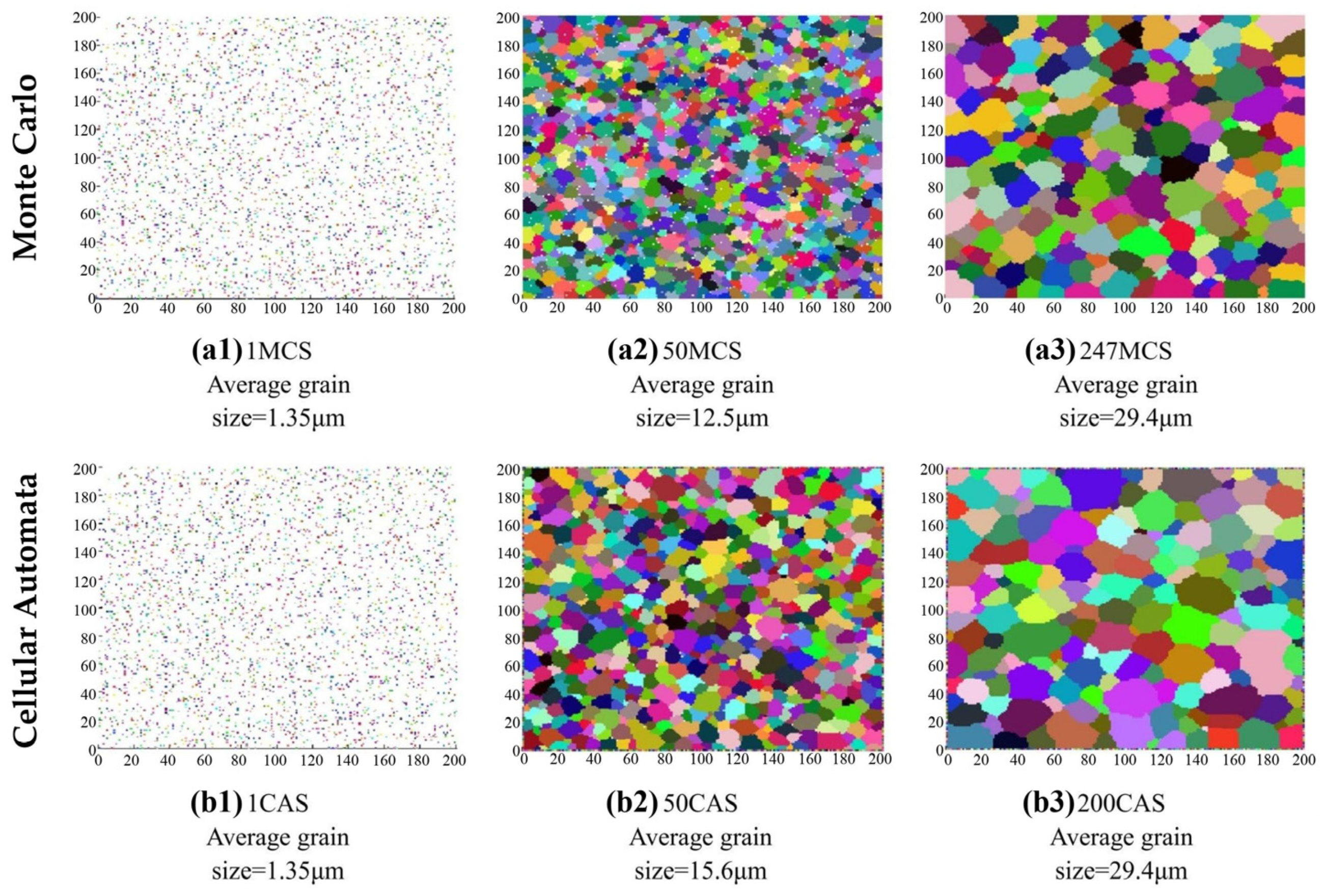


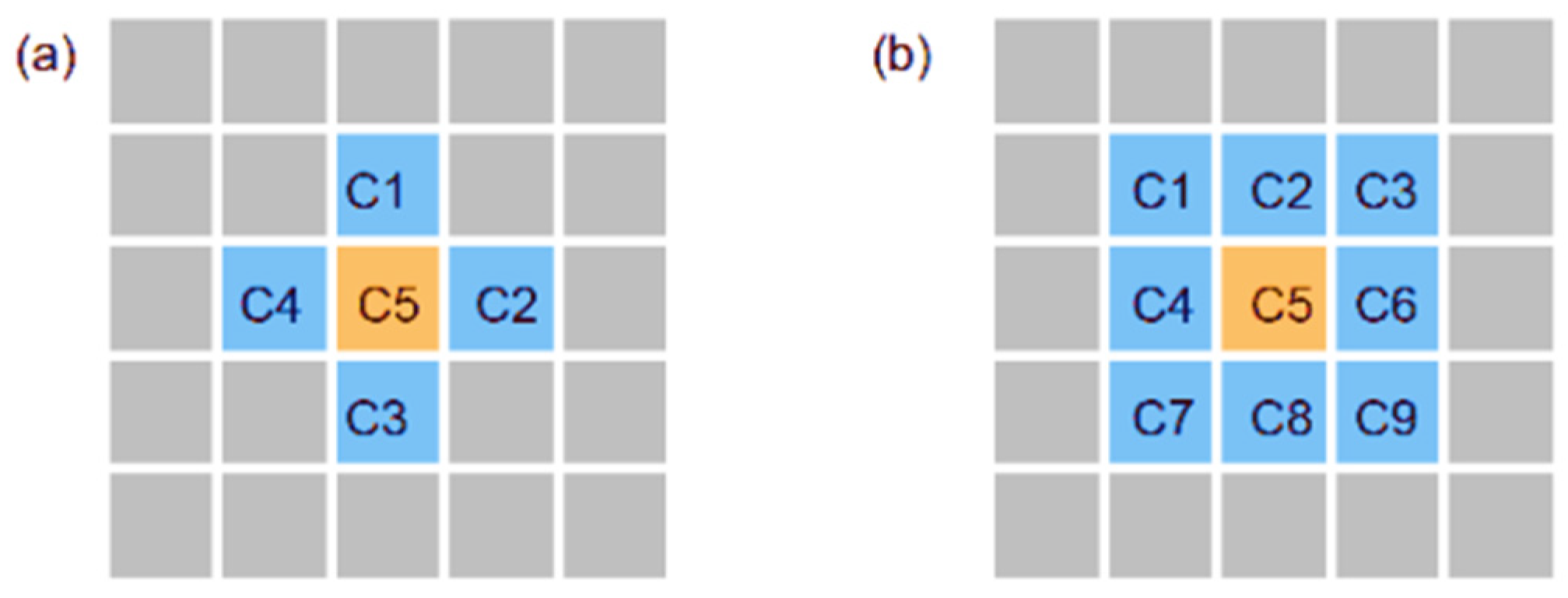
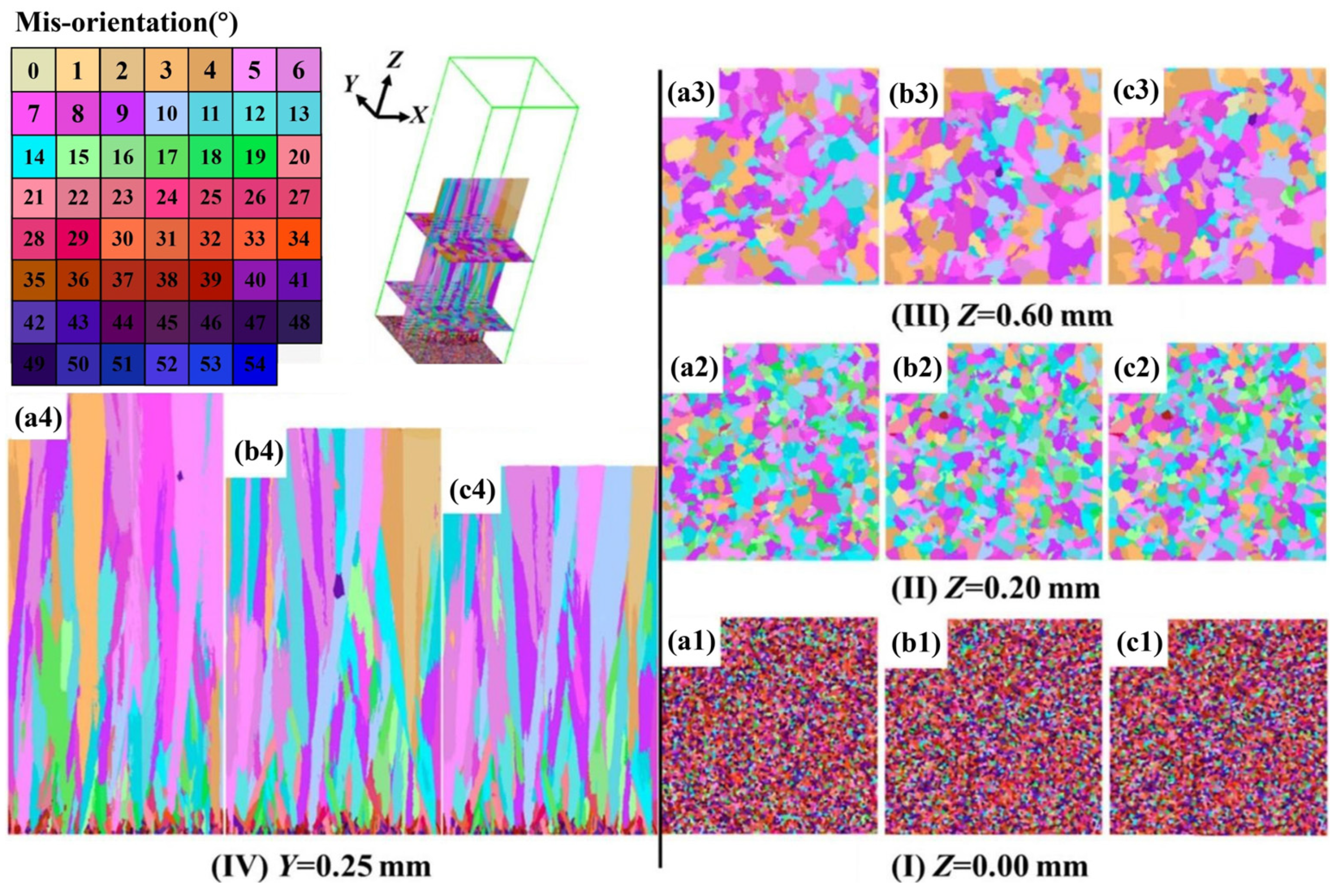
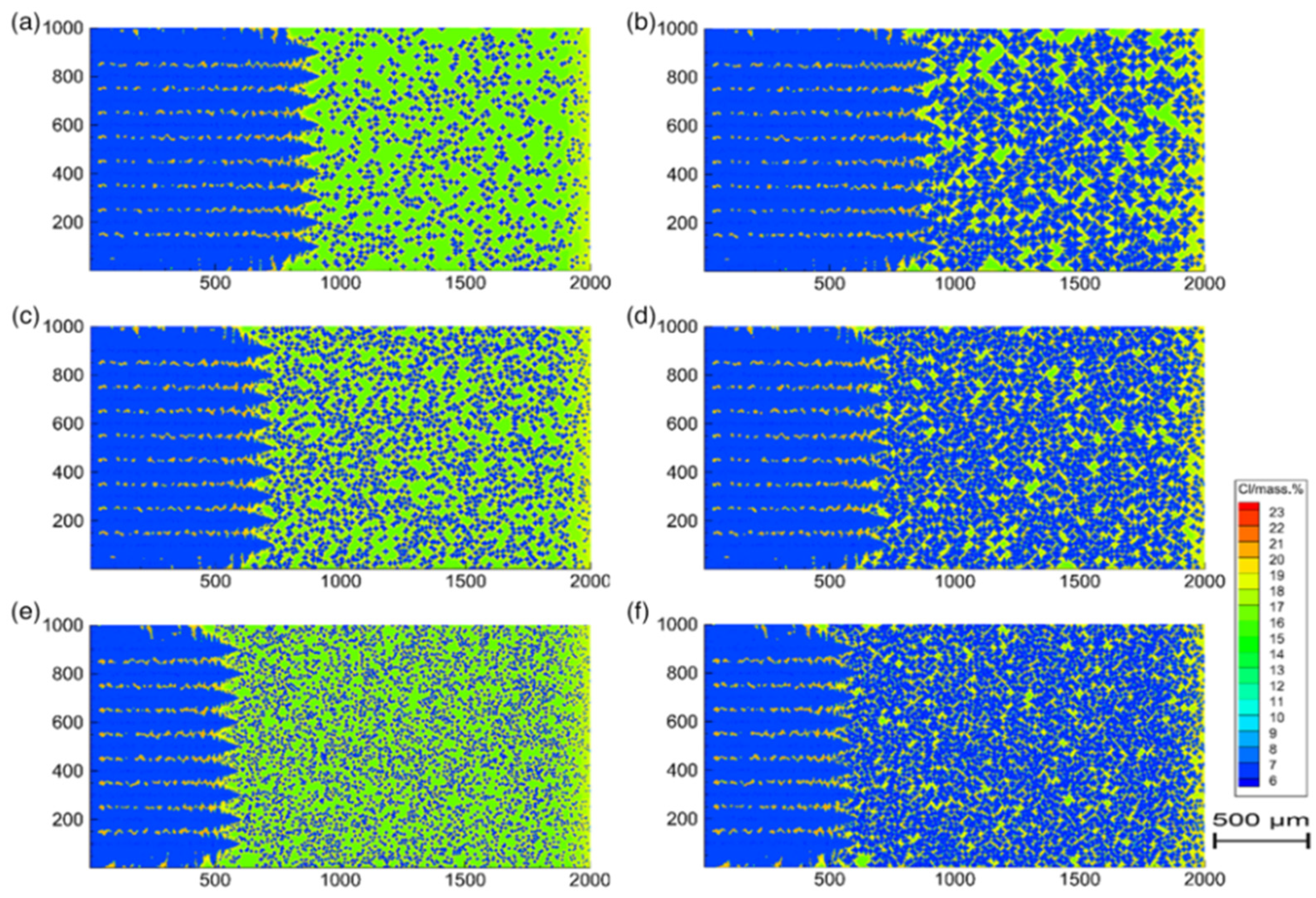
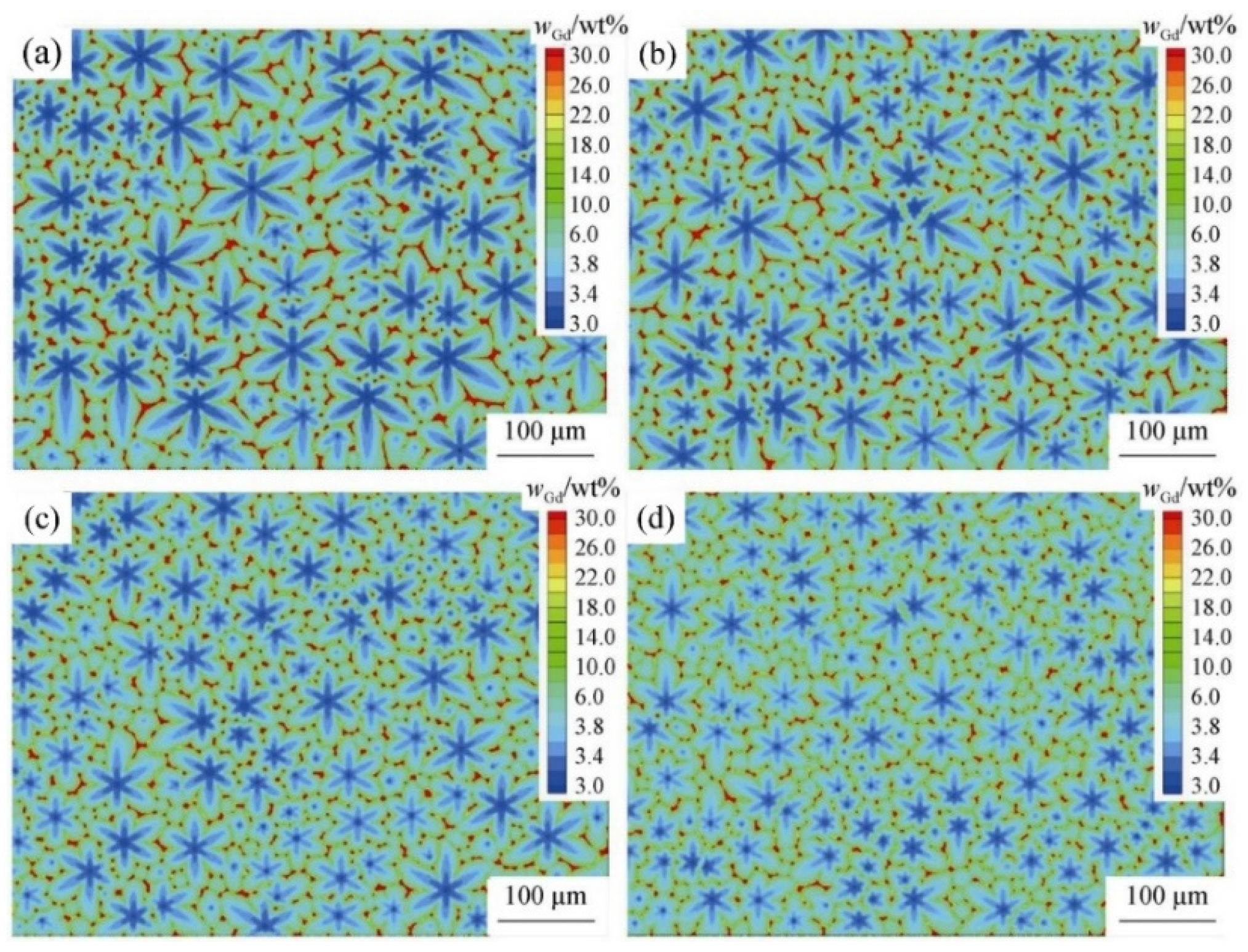

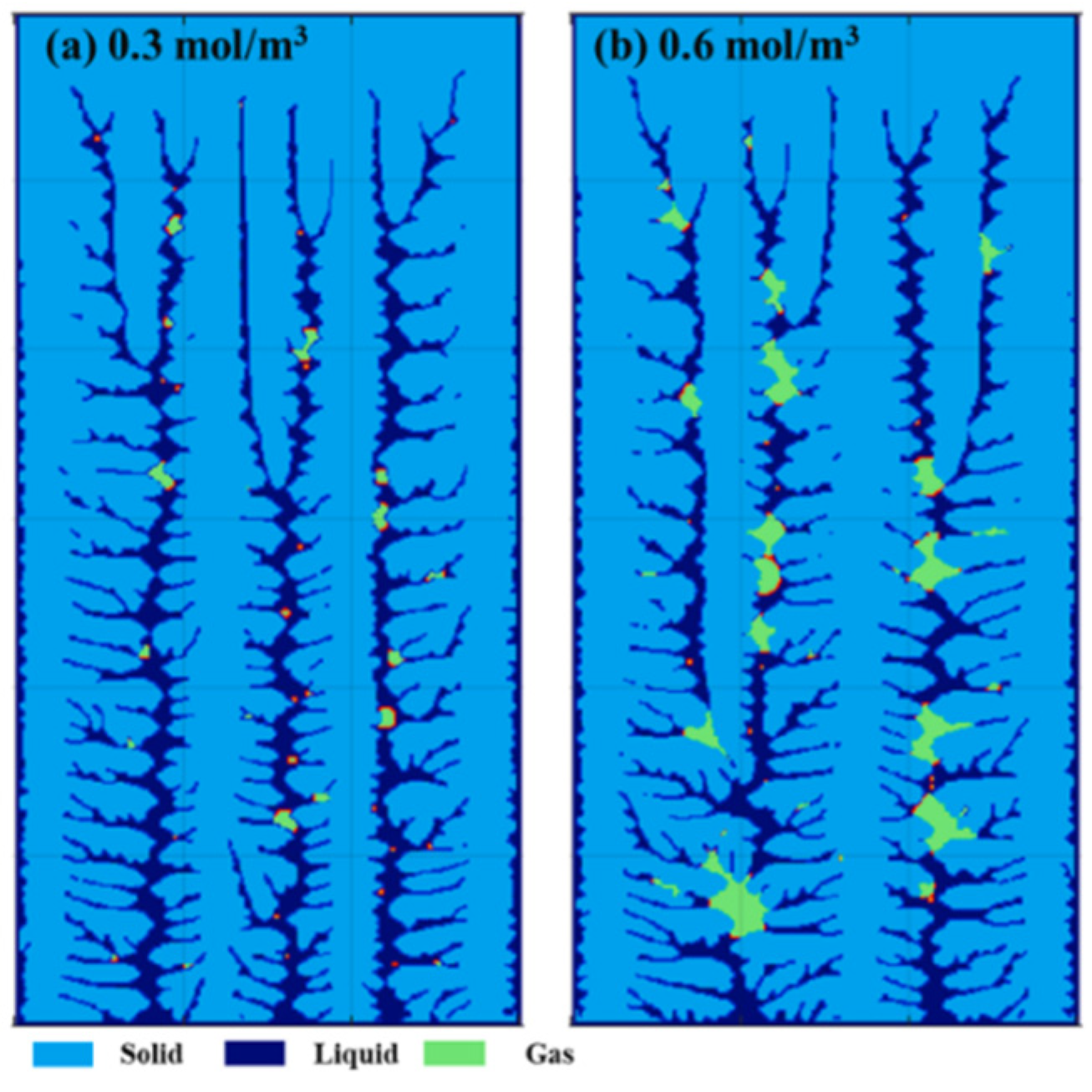
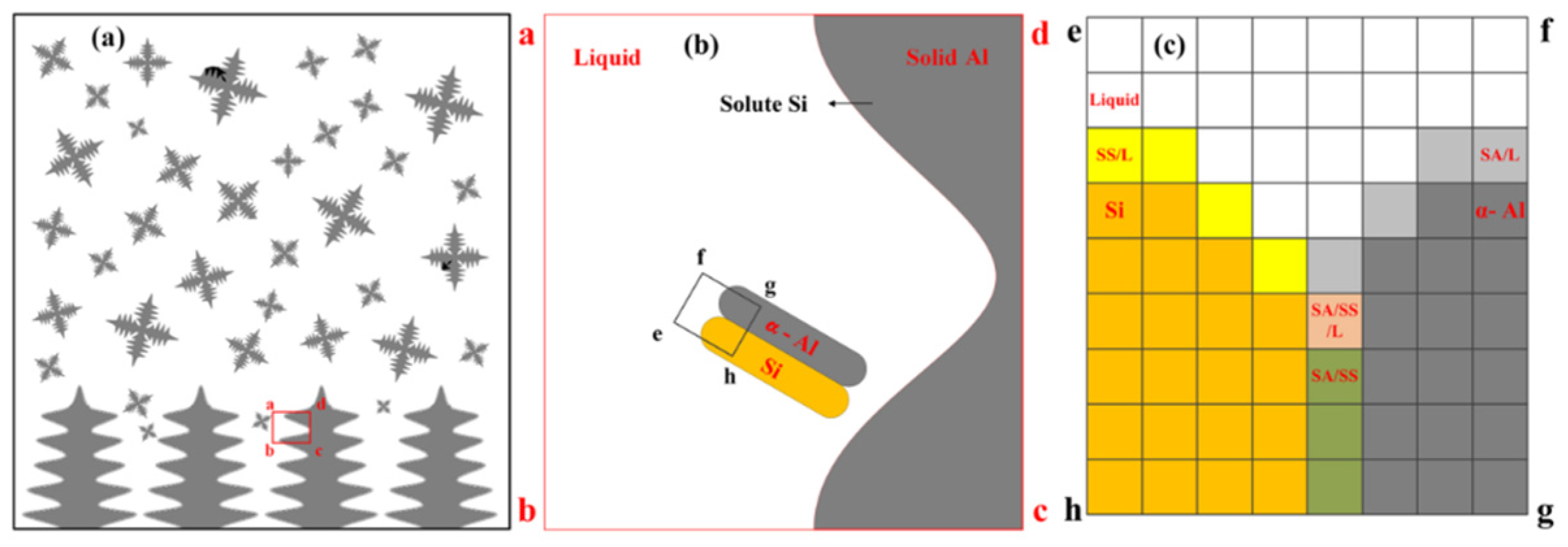
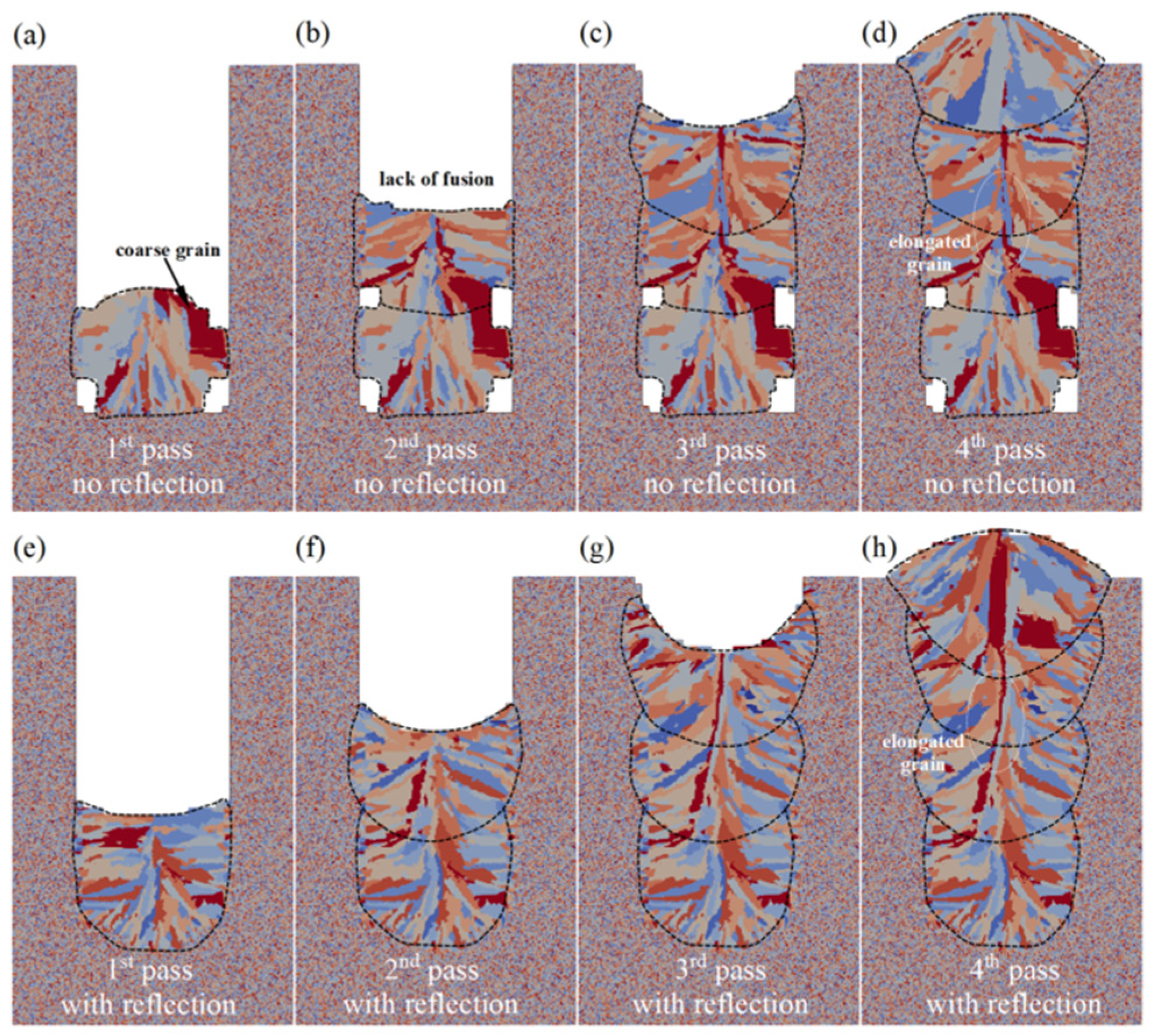
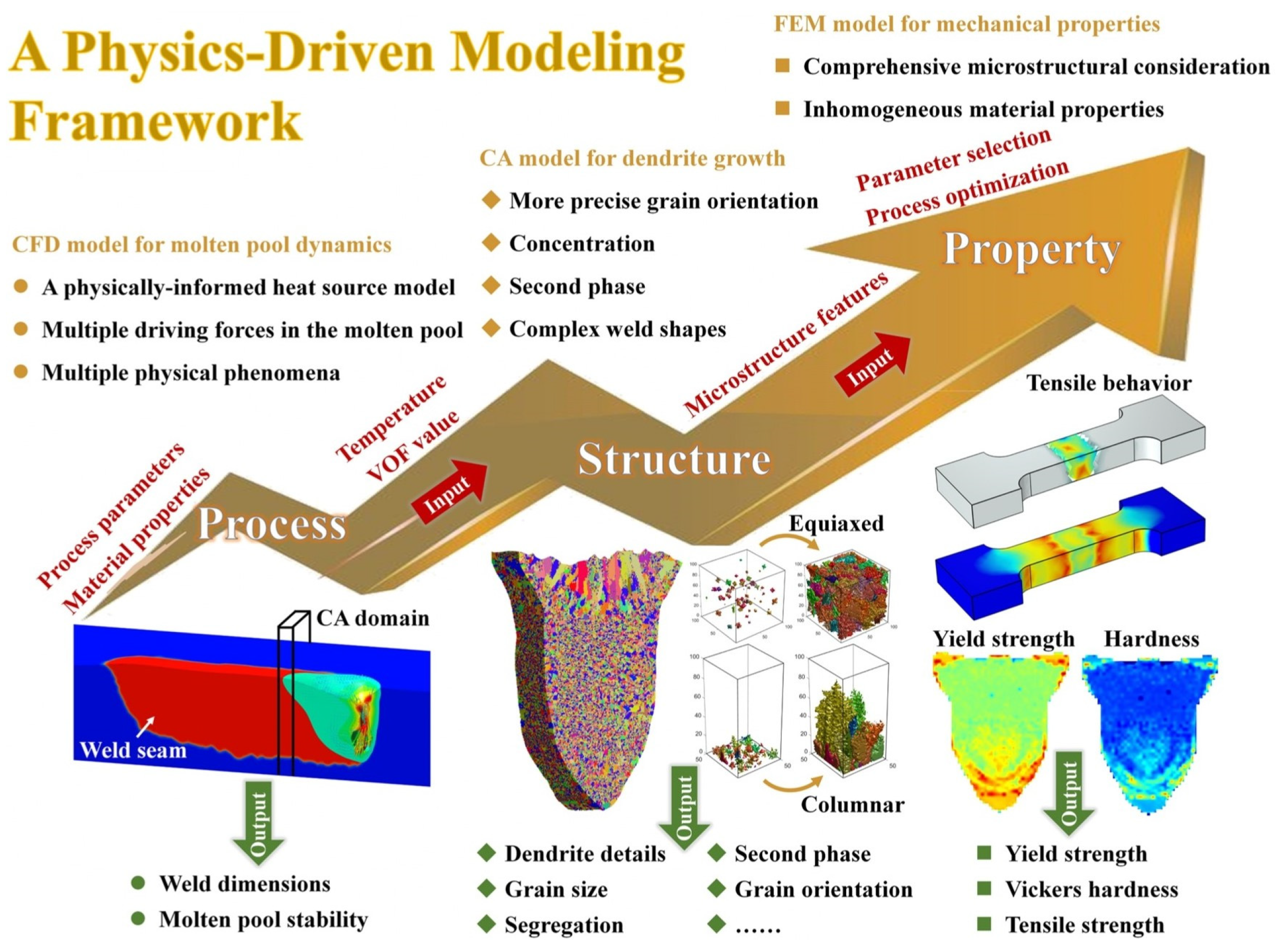
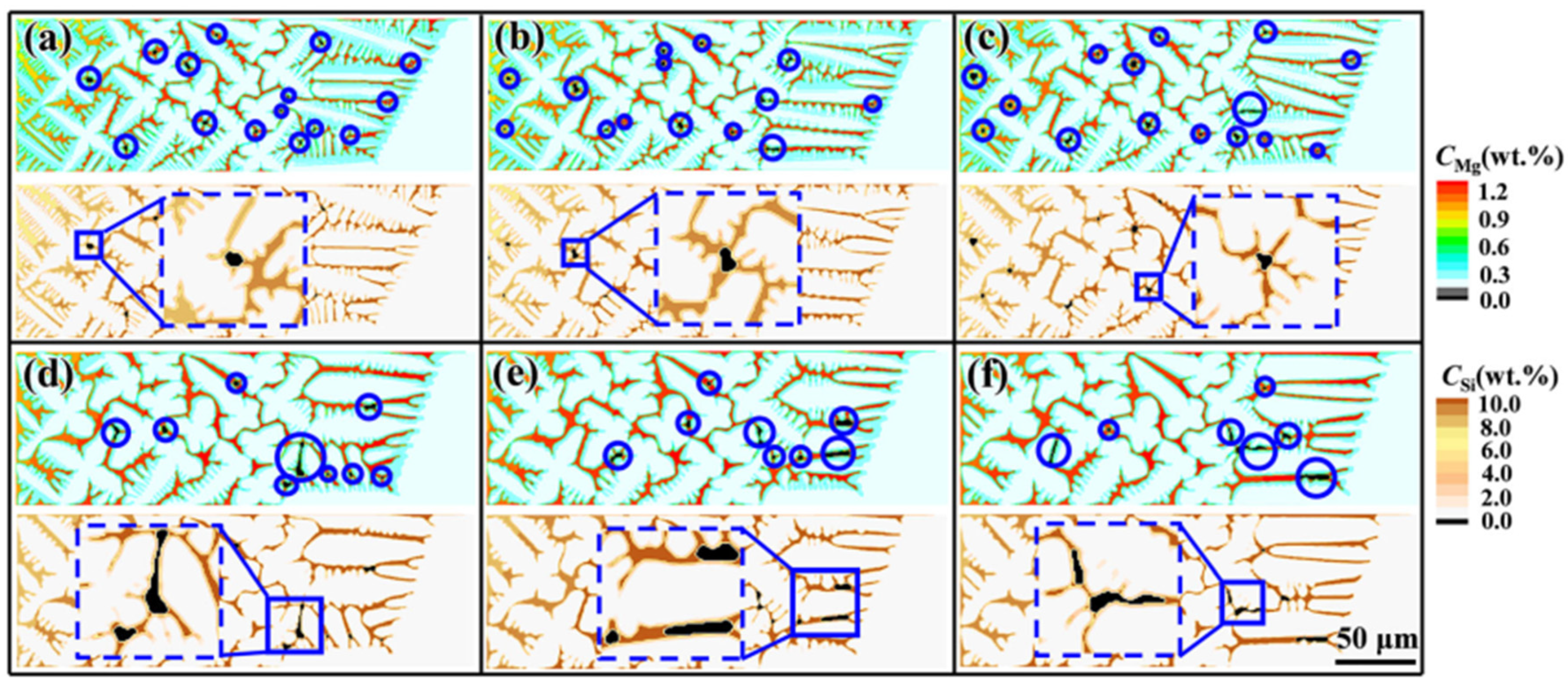
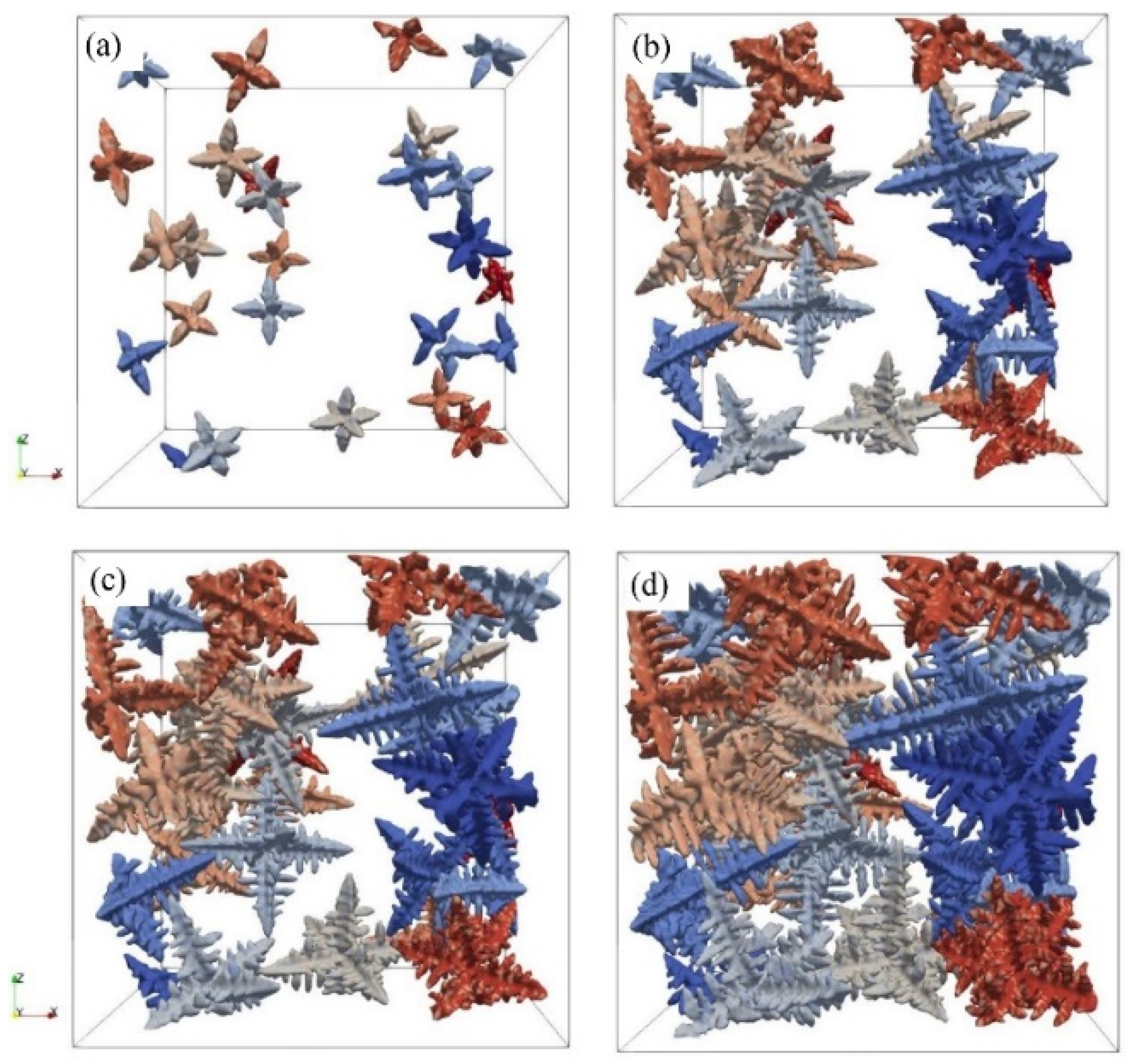
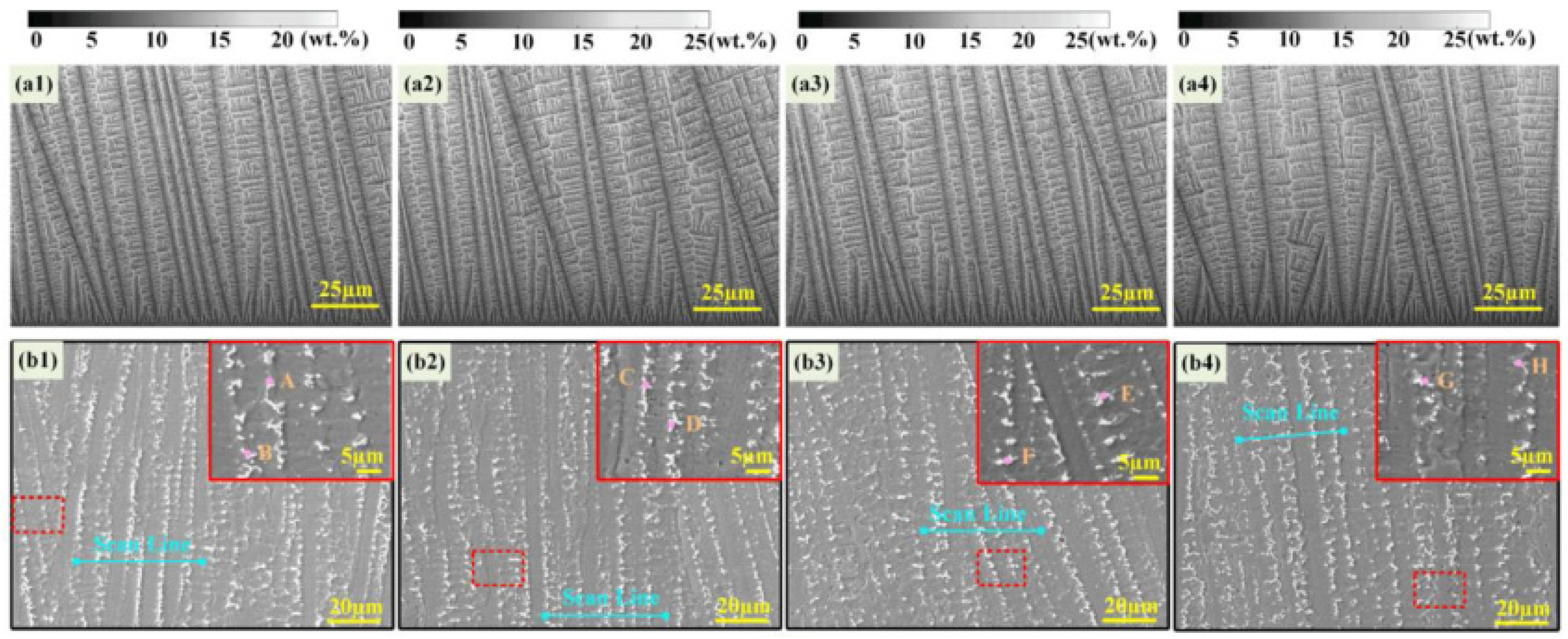
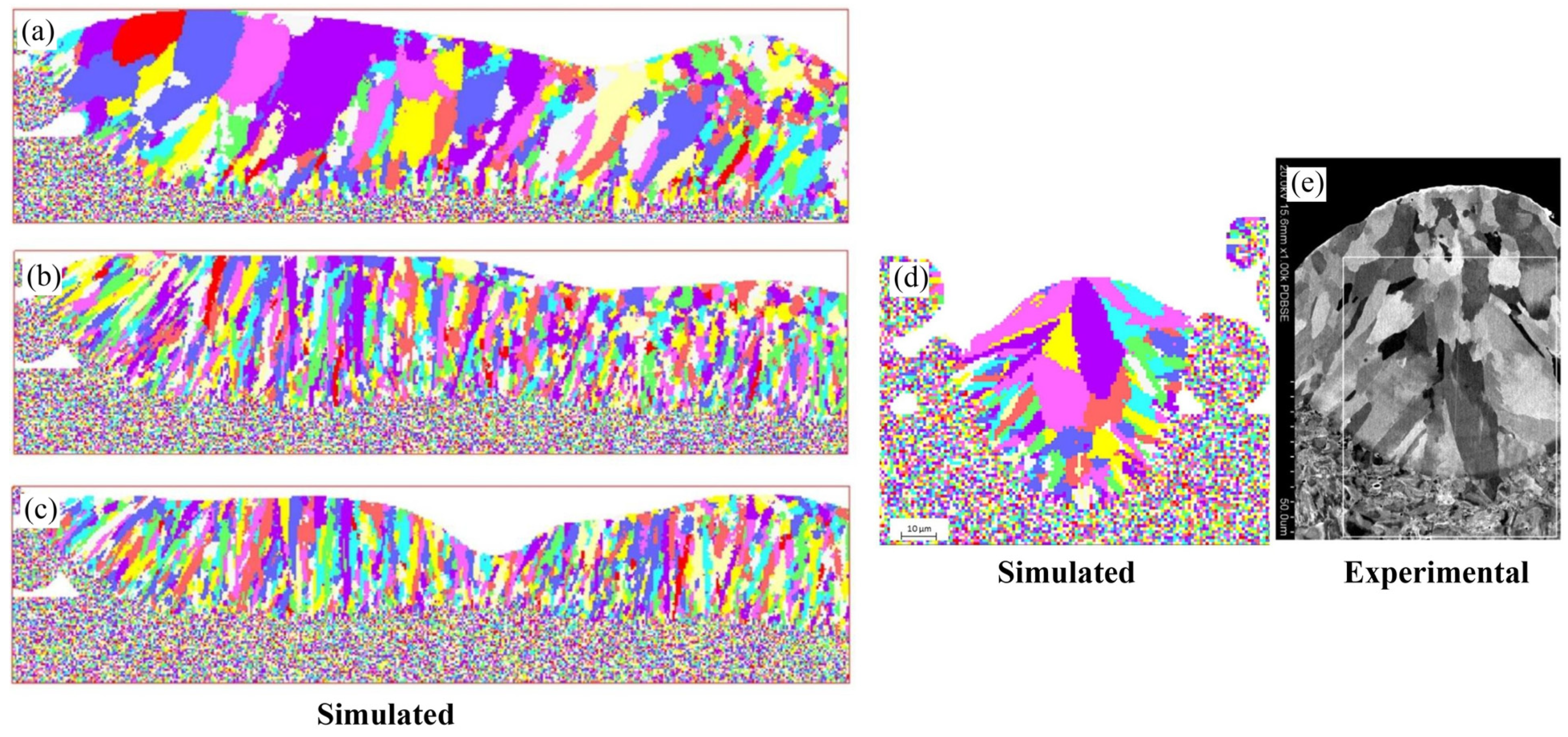

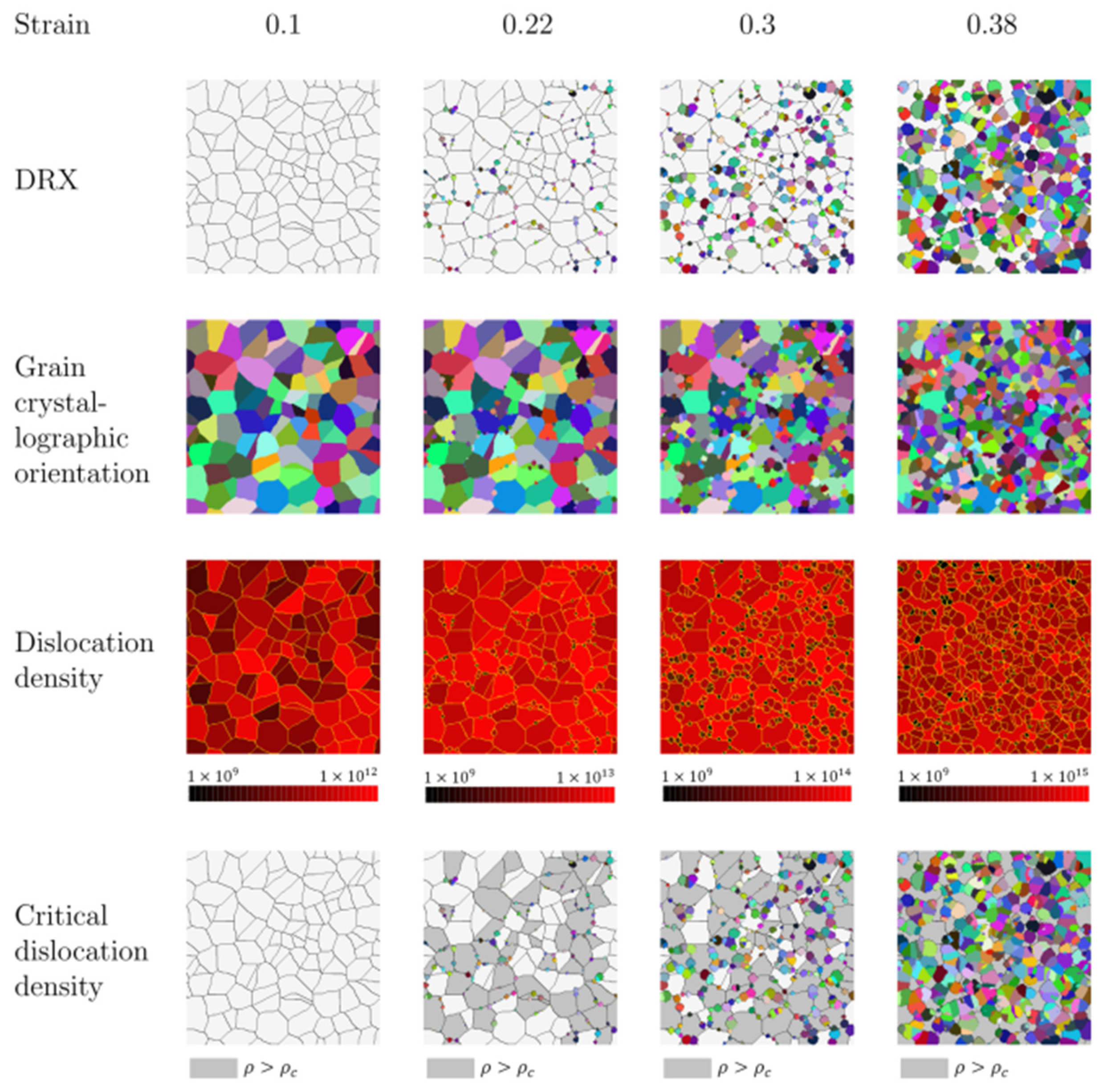
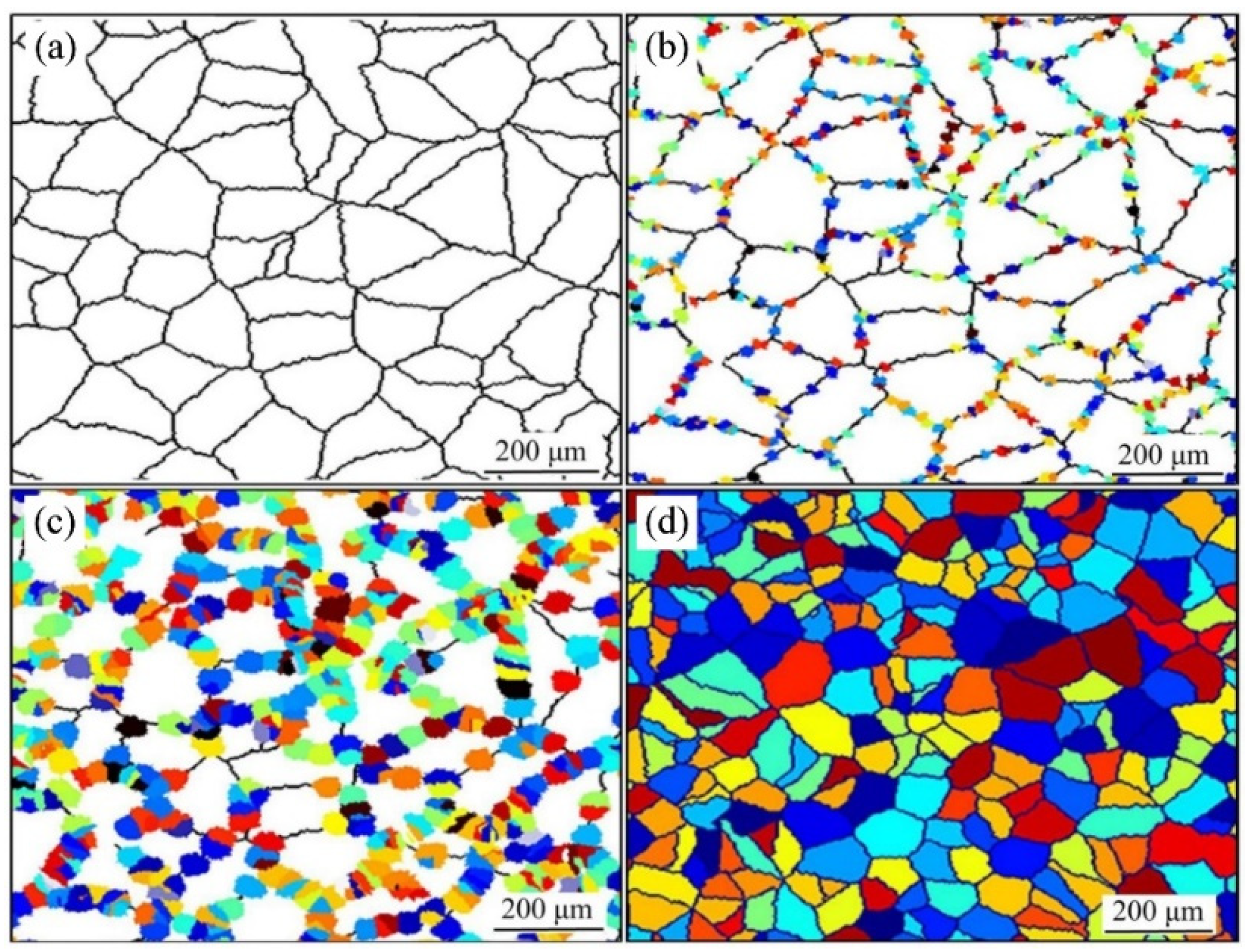
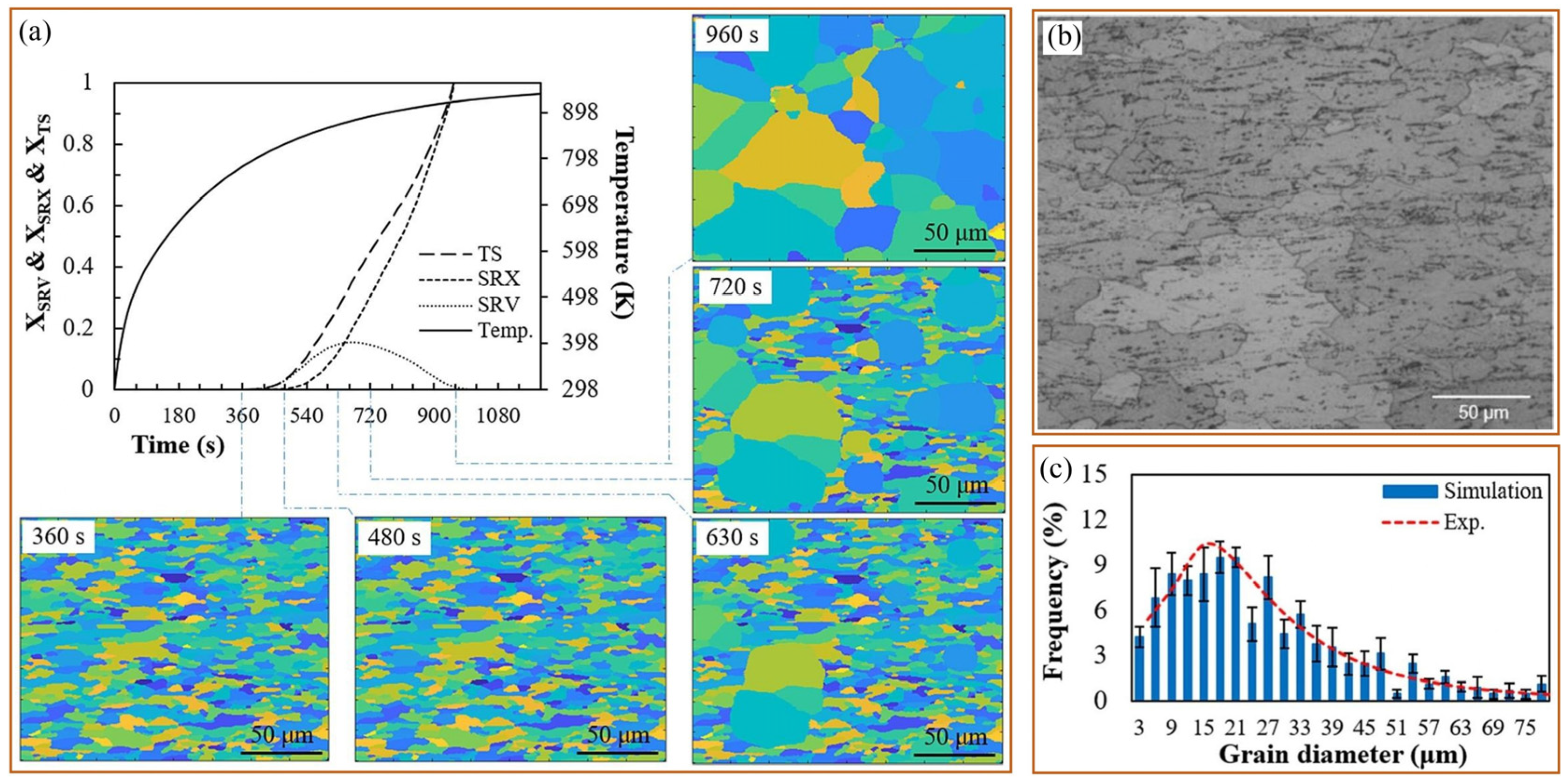
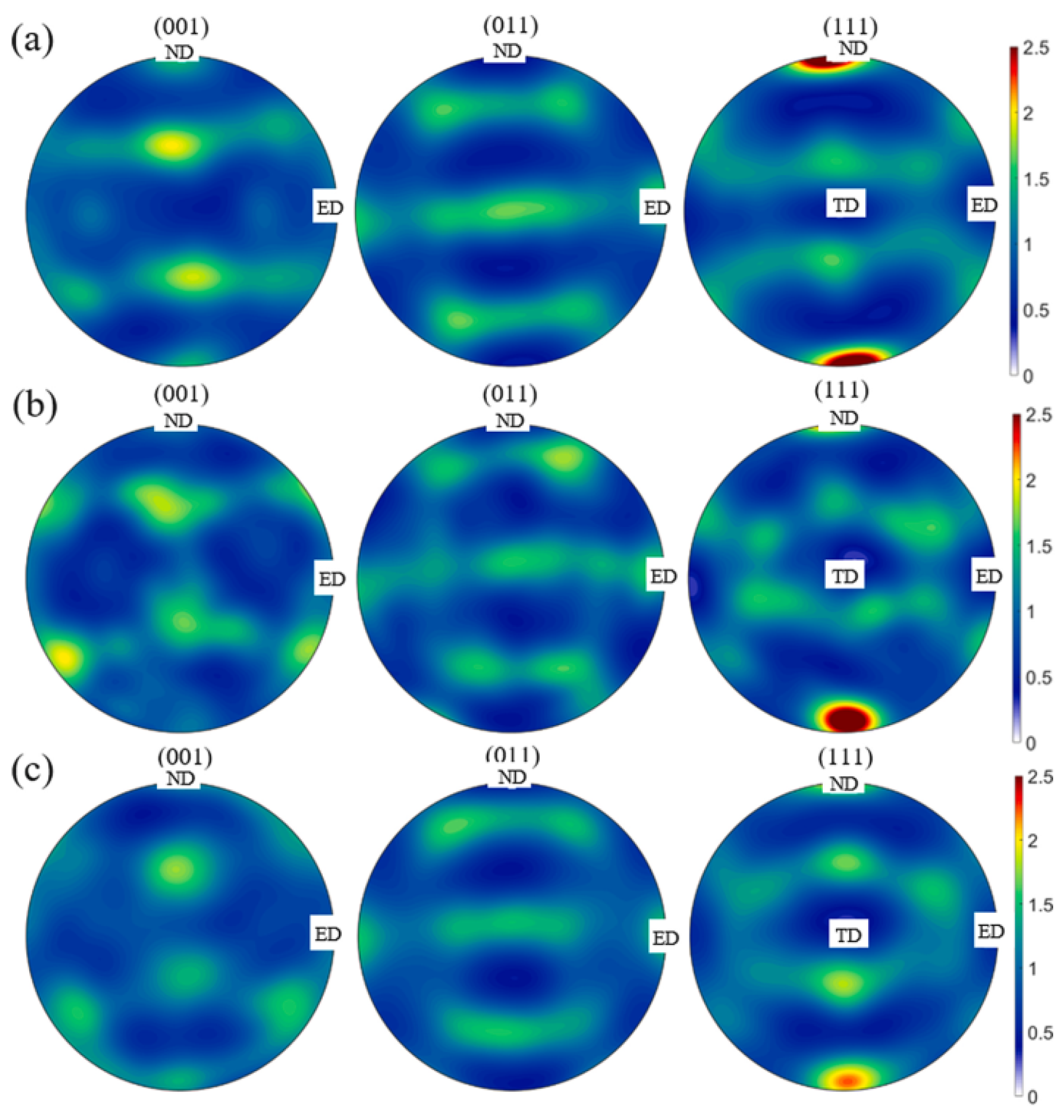
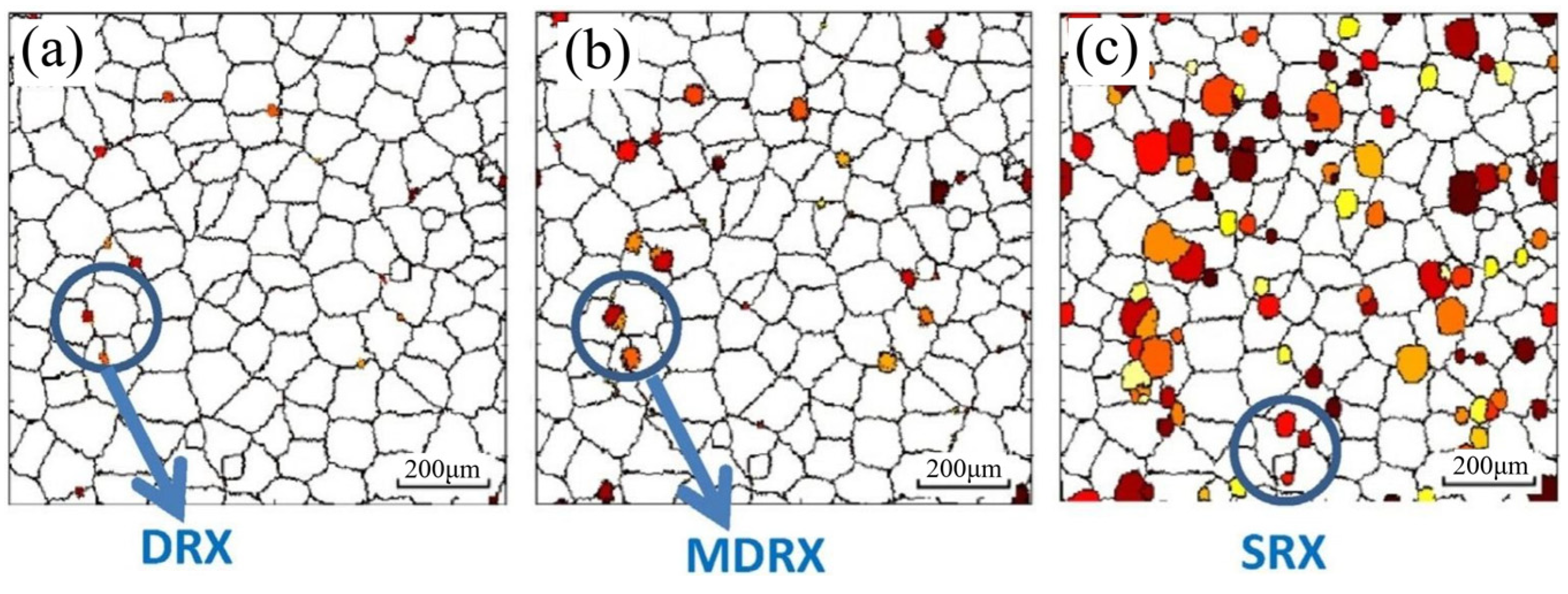
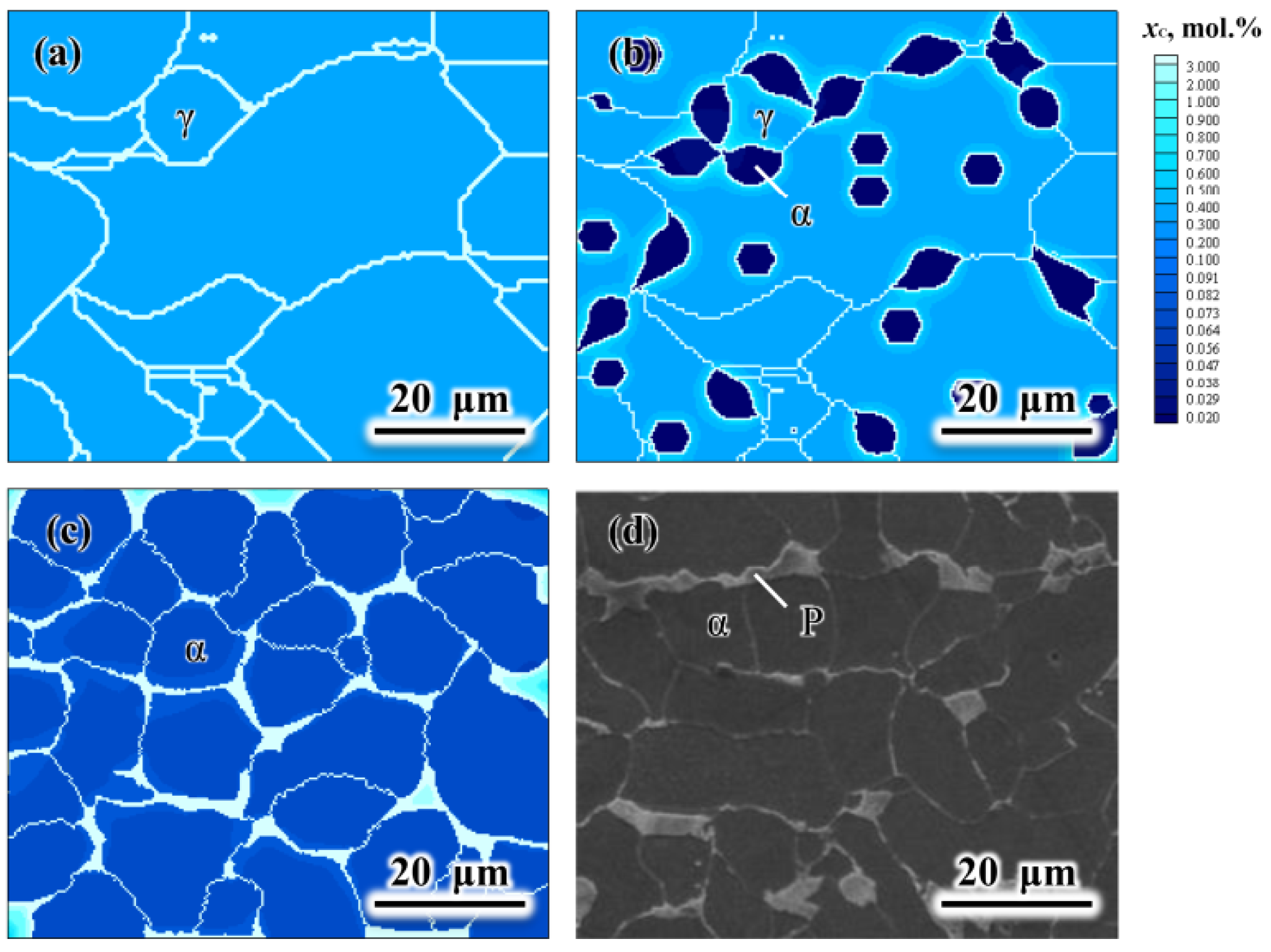



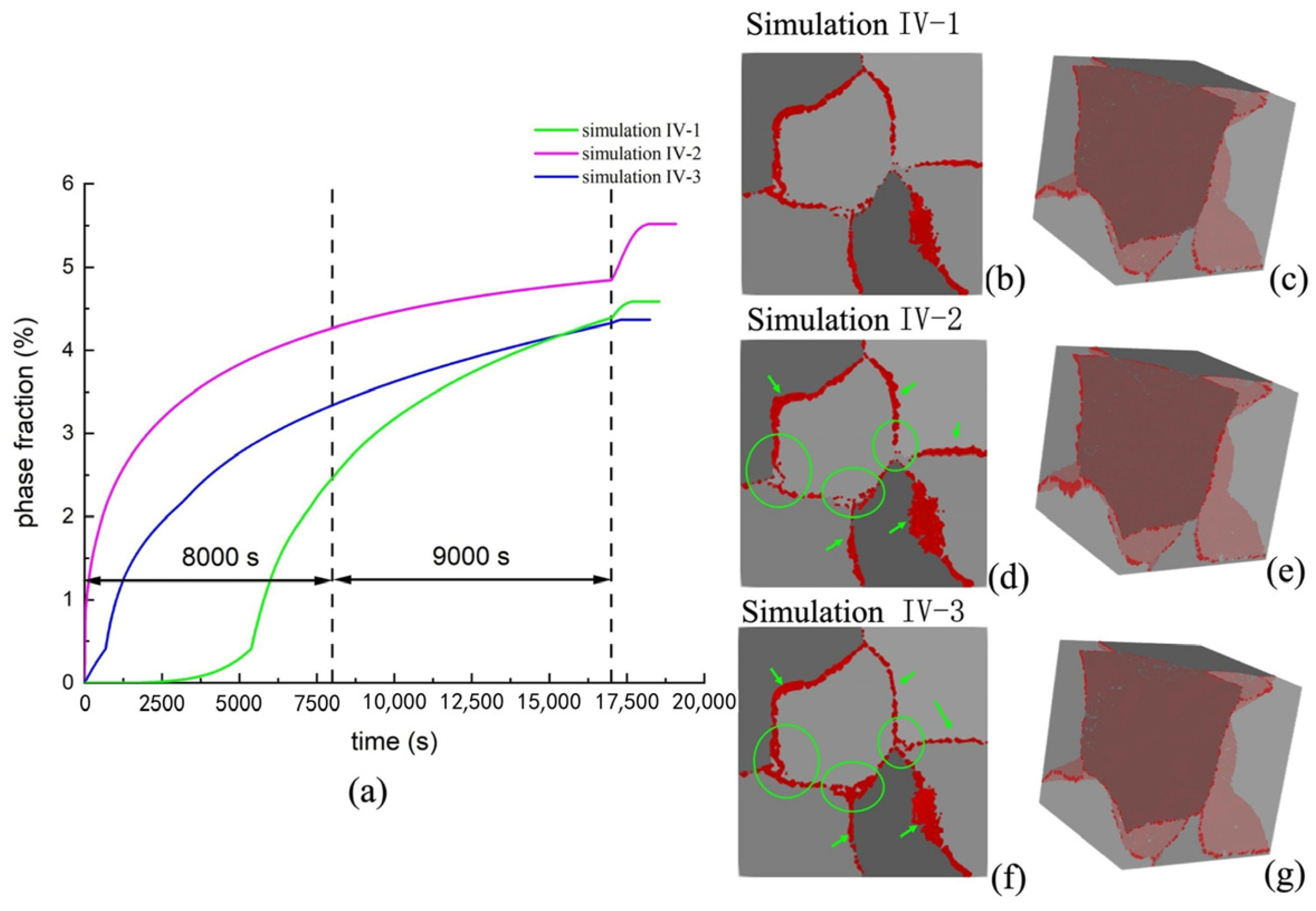



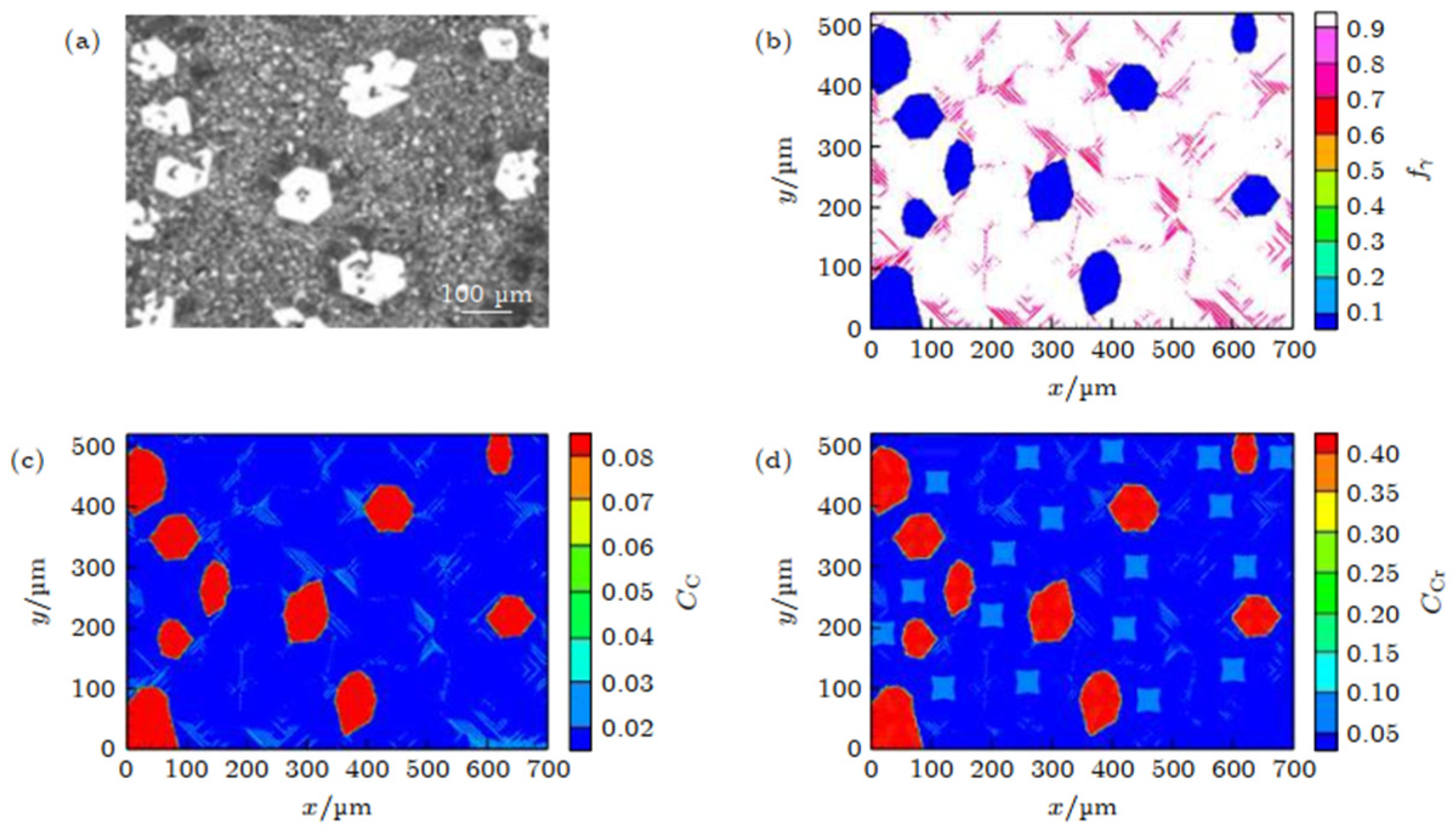

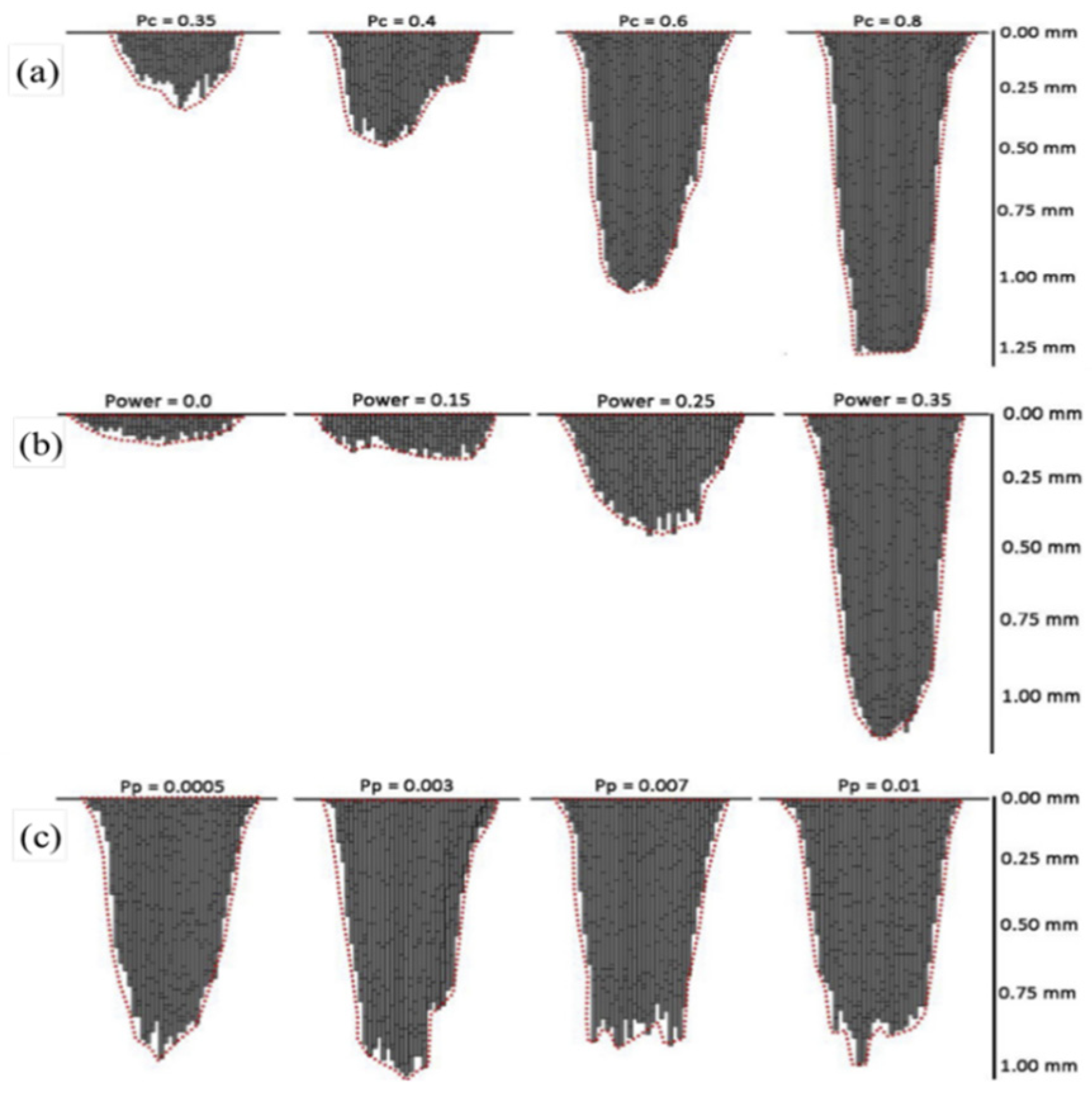
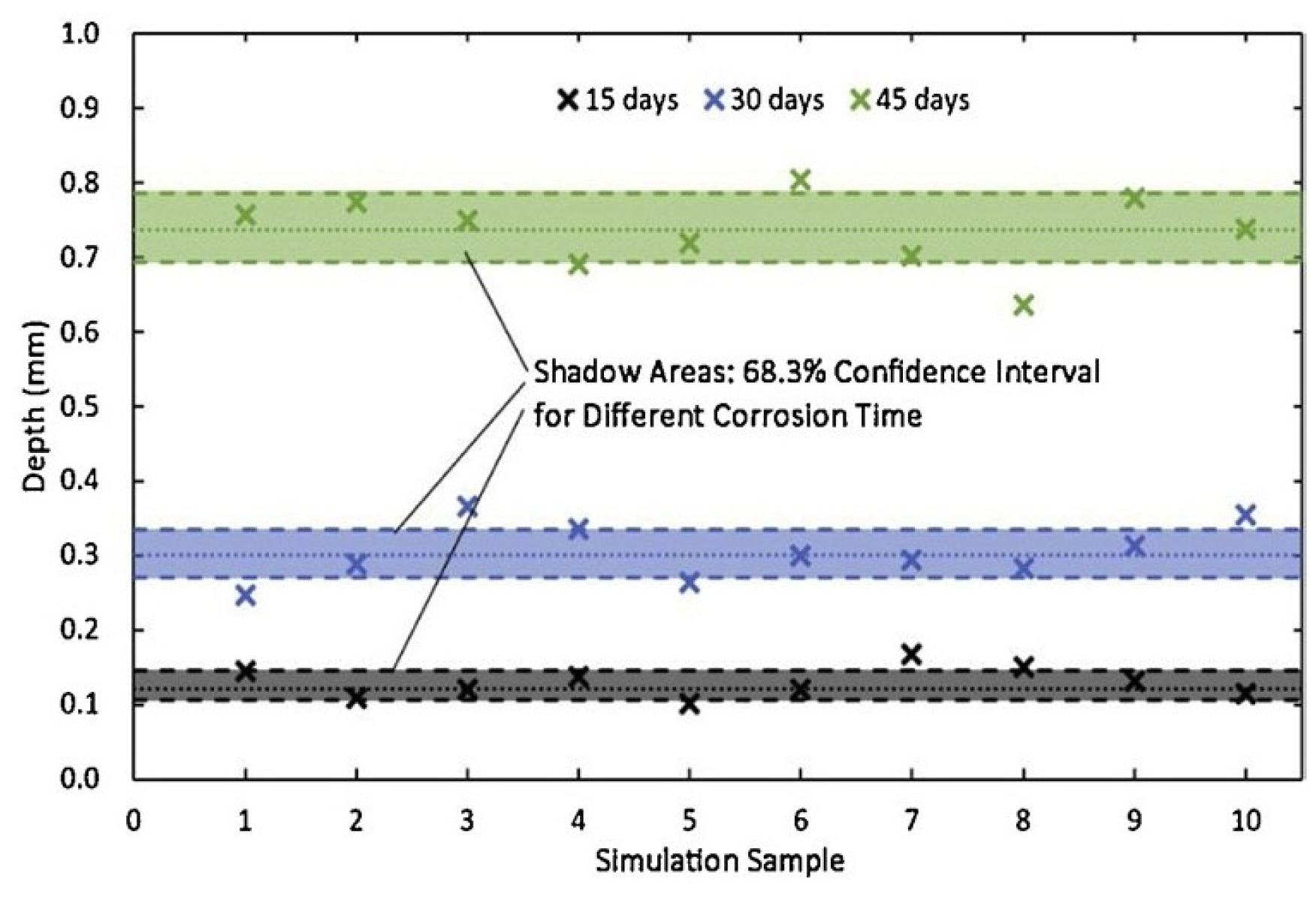
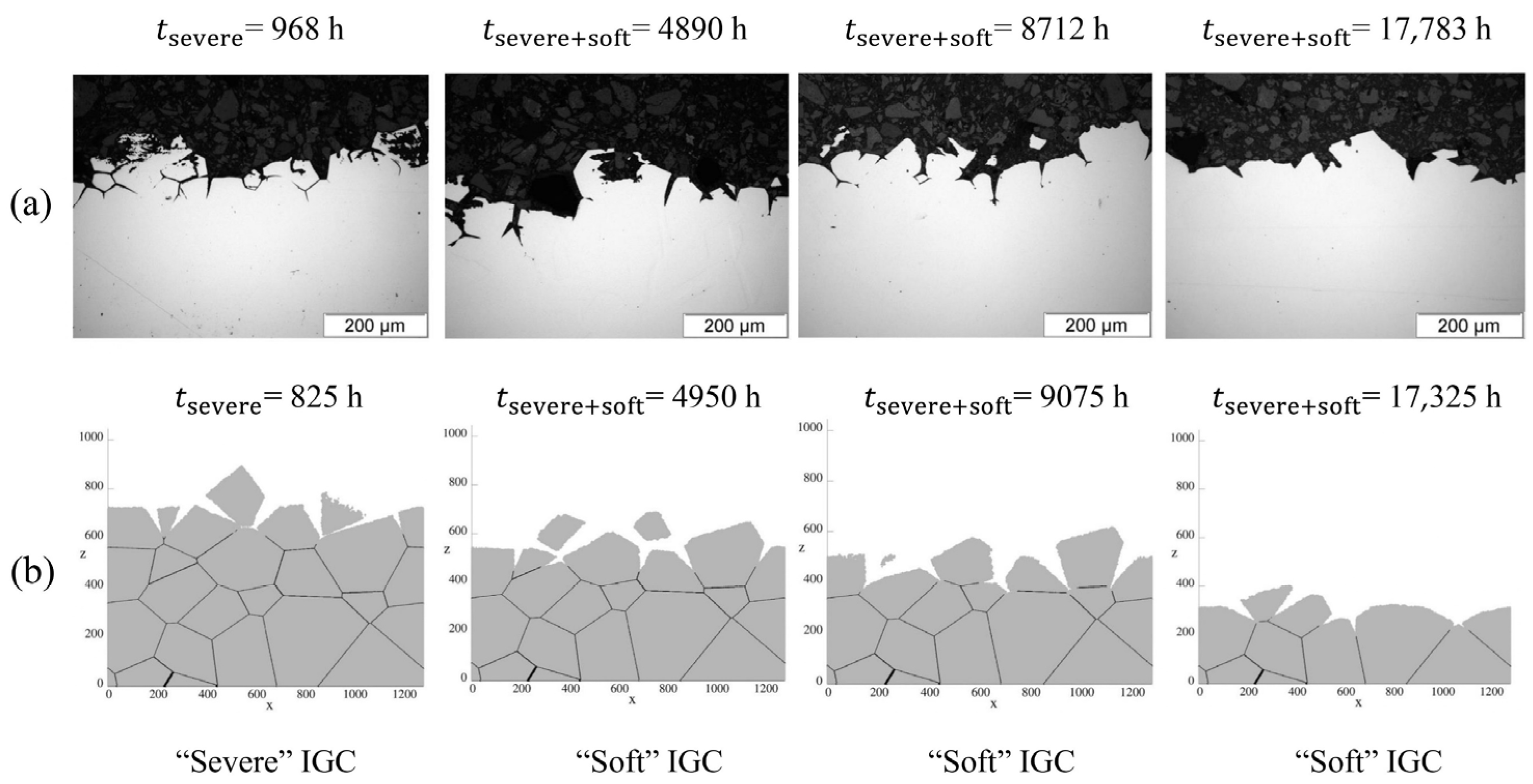
Disclaimer/Publisher’s Note: The statements, opinions and data contained in all publications are solely those of the individual author(s) and contributor(s) and not of MDPI and/or the editor(s). MDPI and/or the editor(s) disclaim responsibility for any injury to people or property resulting from any ideas, methods, instructions or products referred to in the content. |
© 2024 by the authors. Licensee MDPI, Basel, Switzerland. This article is an open access article distributed under the terms and conditions of the Creative Commons Attribution (CC BY) license (https://creativecommons.org/licenses/by/4.0/).
Share and Cite
Zhi, Y.; Jiang, Y.; Ke, D.; Hu, X.; Liu, X. Review on Cellular Automata for Microstructure Simulation of Metallic Materials. Materials 2024, 17, 1370. https://doi.org/10.3390/ma17061370
Zhi Y, Jiang Y, Ke D, Hu X, Liu X. Review on Cellular Automata for Microstructure Simulation of Metallic Materials. Materials. 2024; 17(6):1370. https://doi.org/10.3390/ma17061370
Chicago/Turabian StyleZhi, Ying, Yao Jiang, Diwen Ke, Xianlei Hu, and Xianghua Liu. 2024. "Review on Cellular Automata for Microstructure Simulation of Metallic Materials" Materials 17, no. 6: 1370. https://doi.org/10.3390/ma17061370





